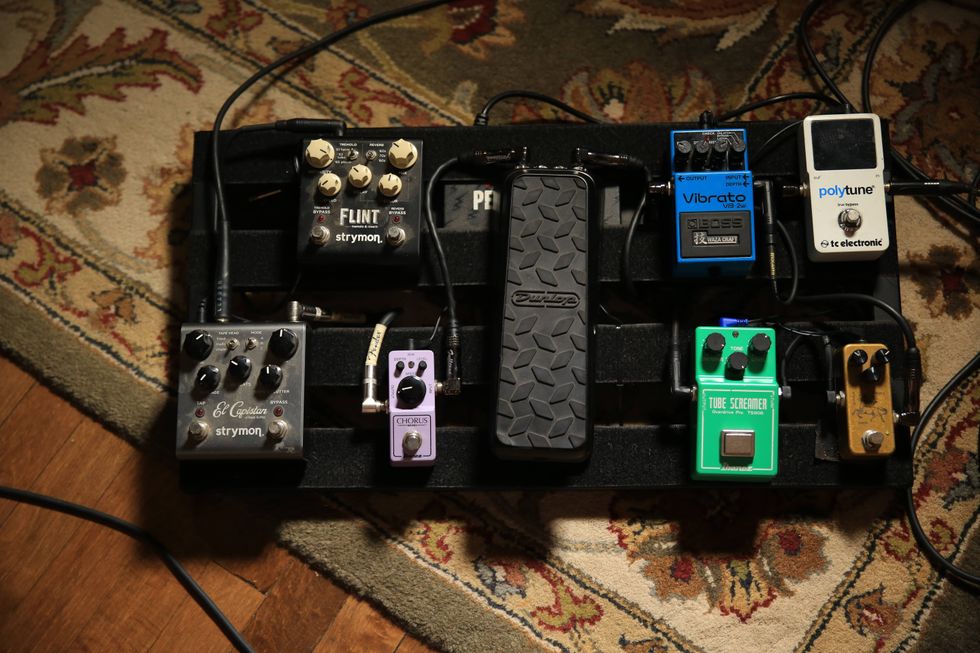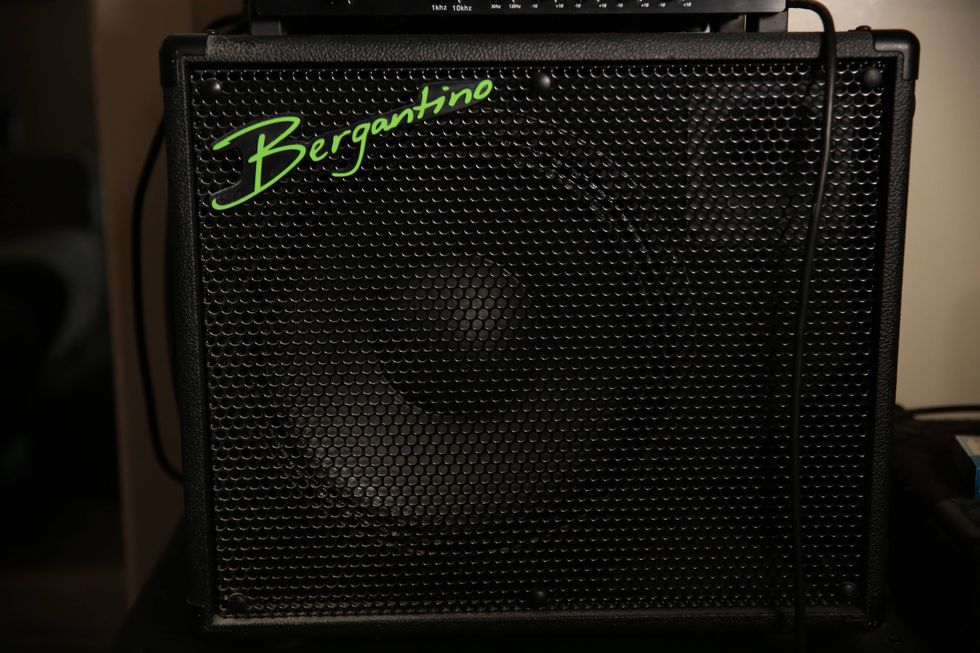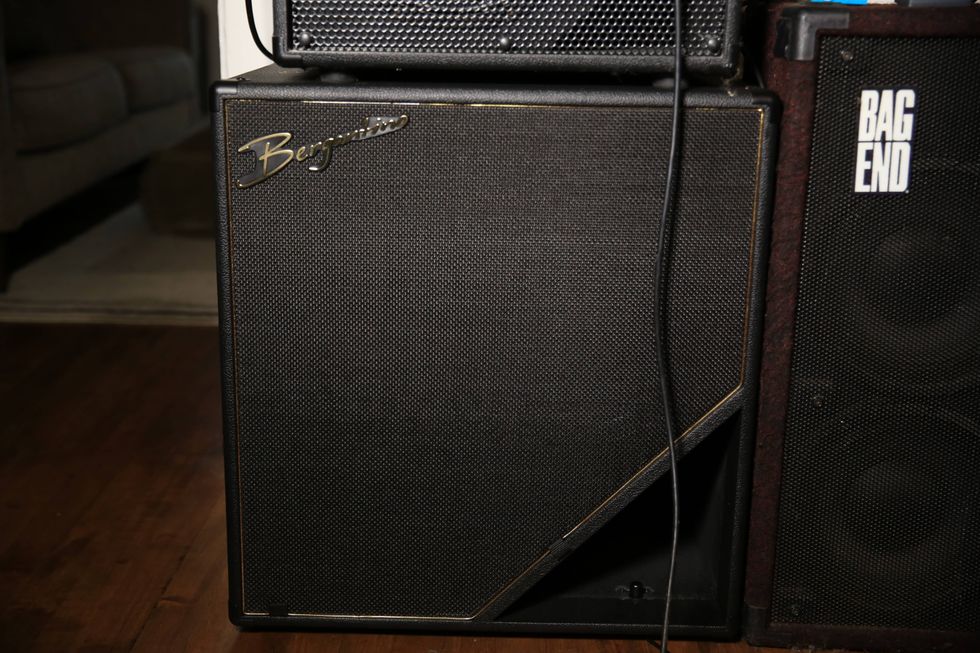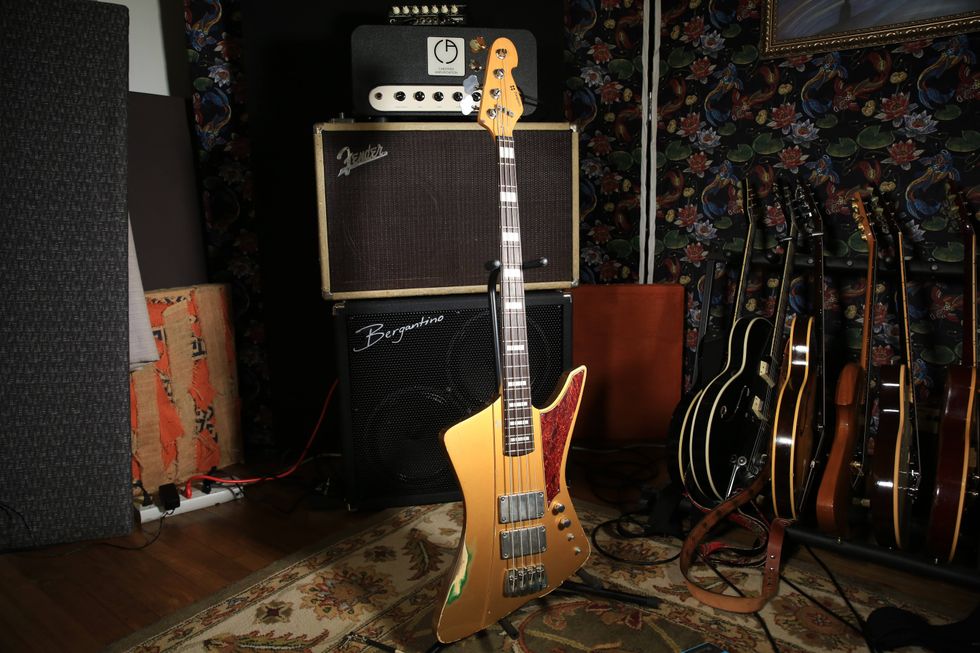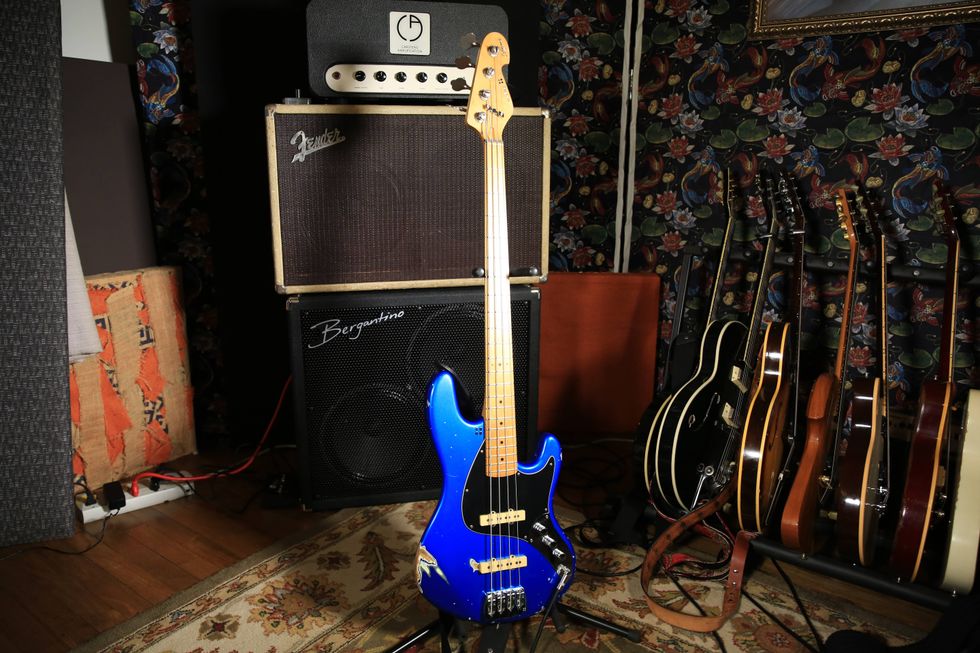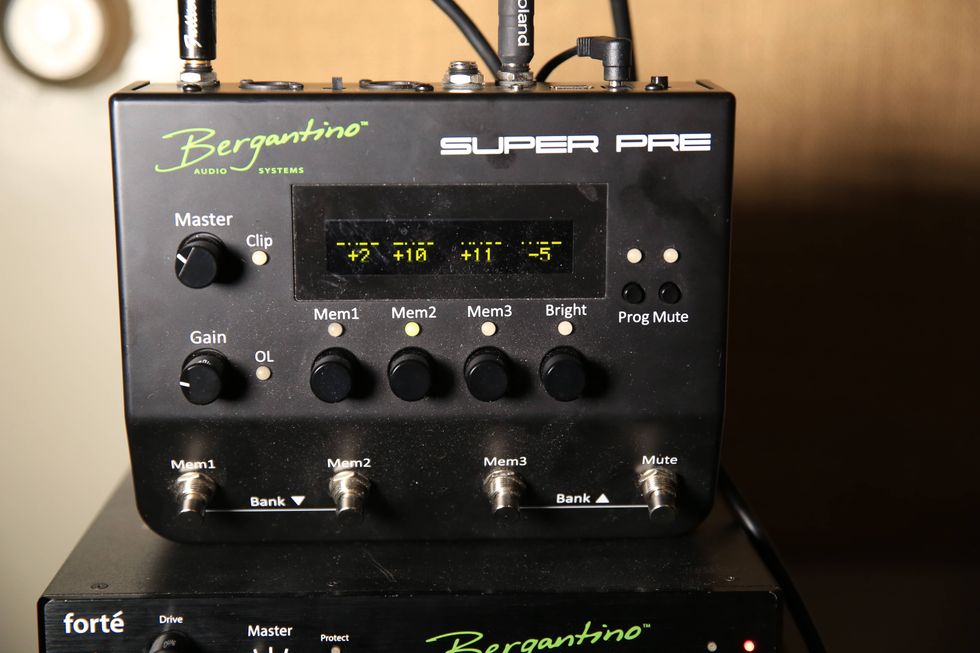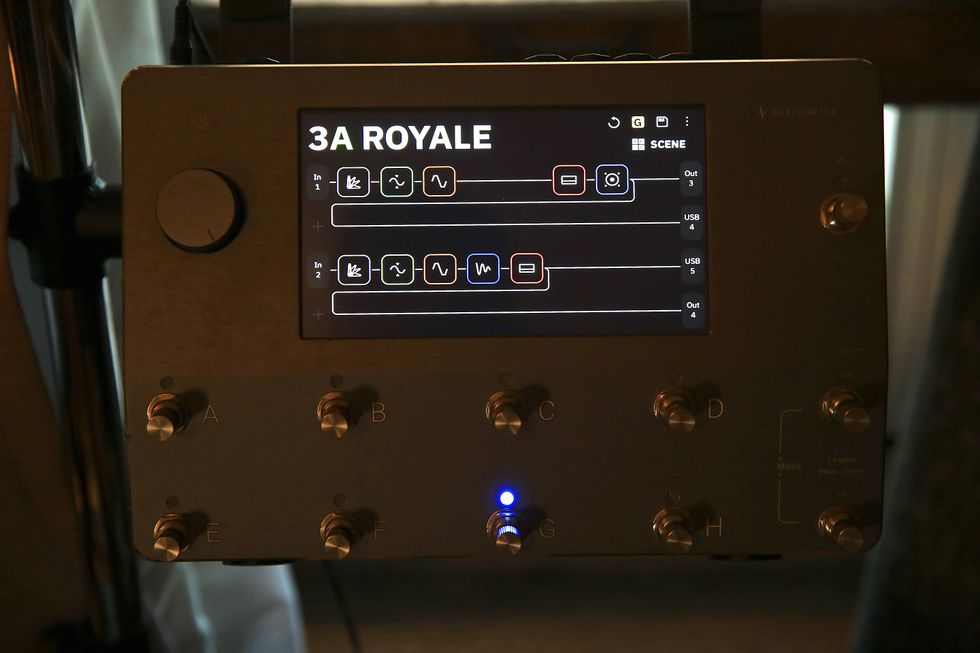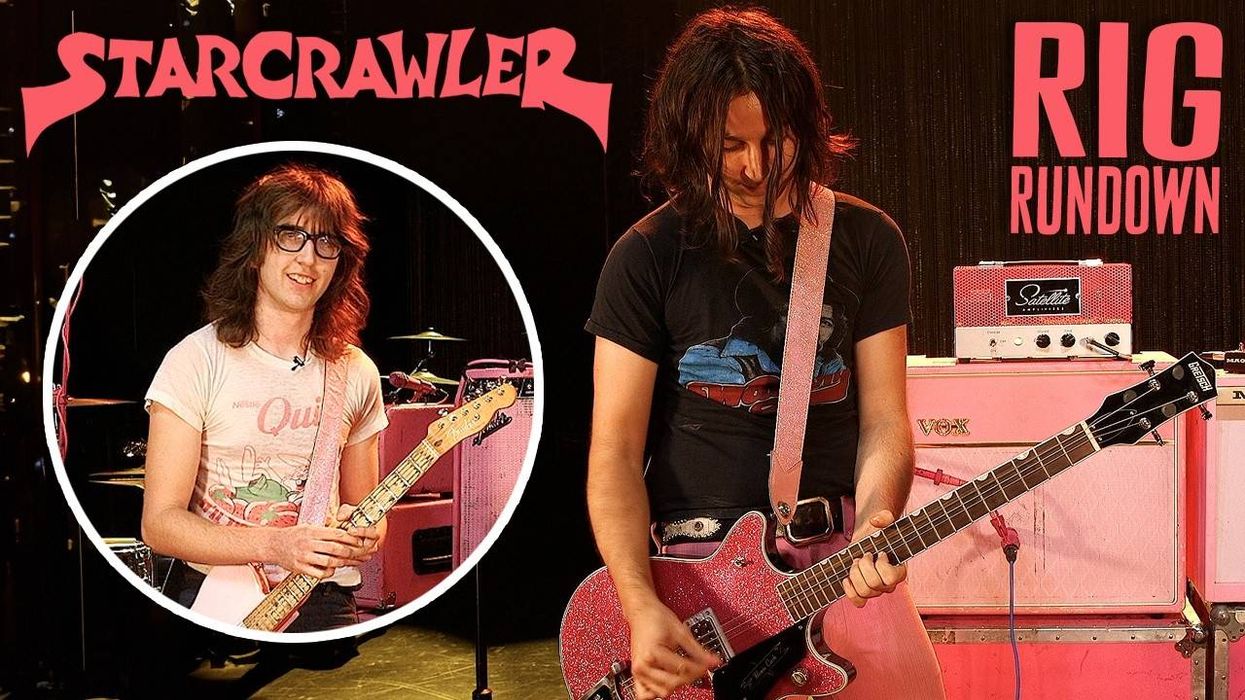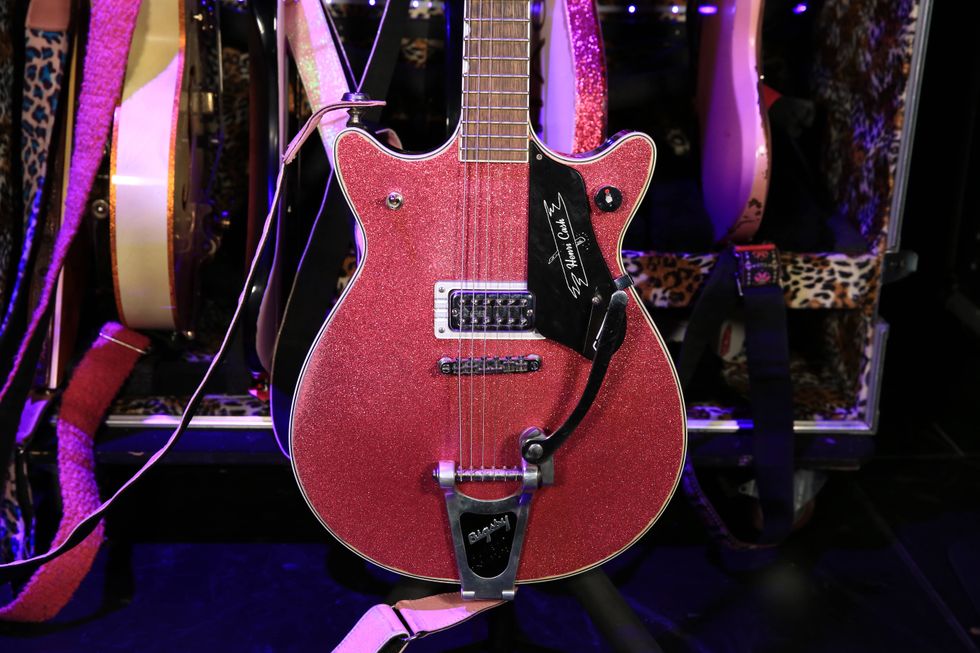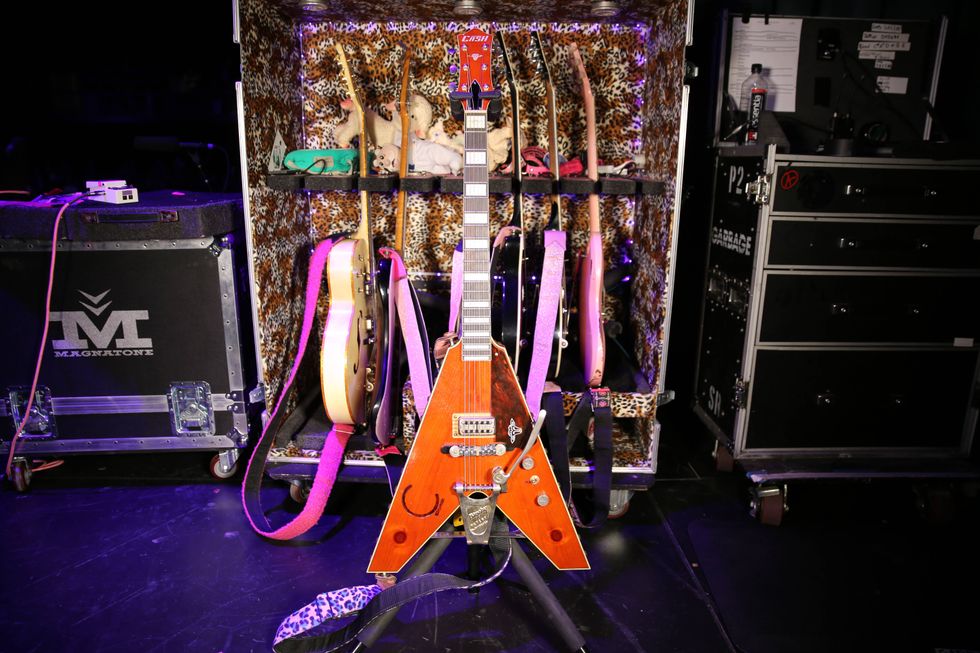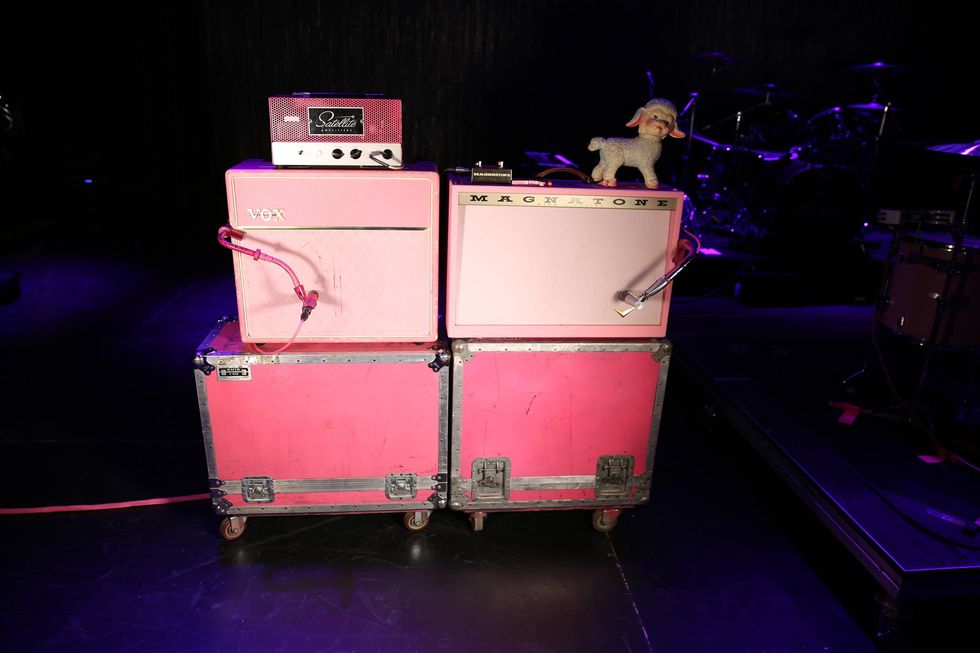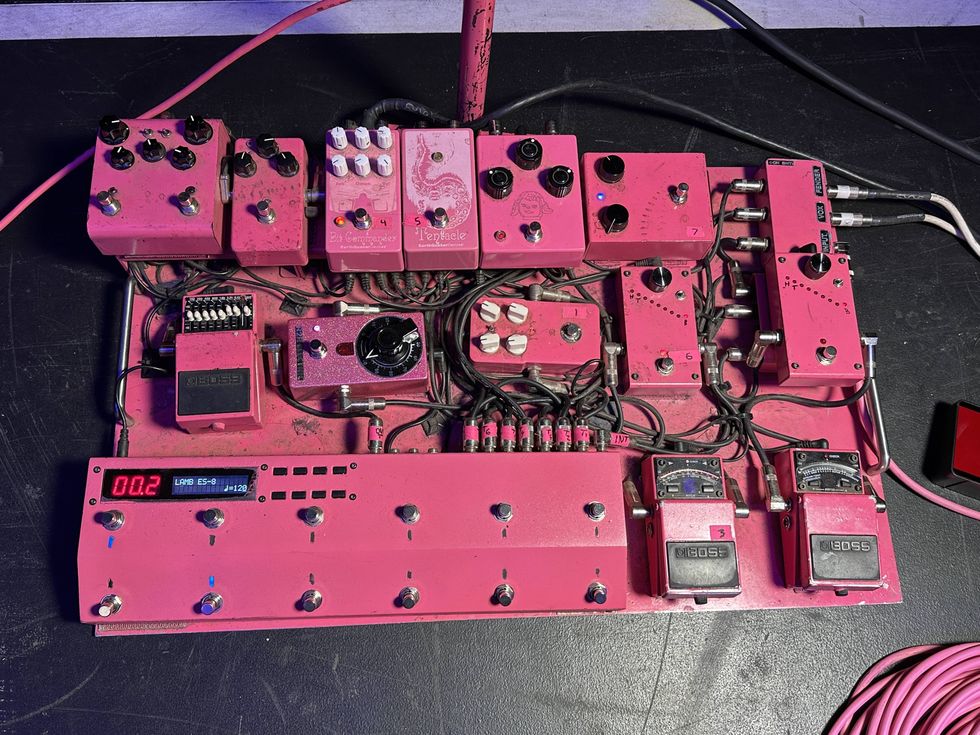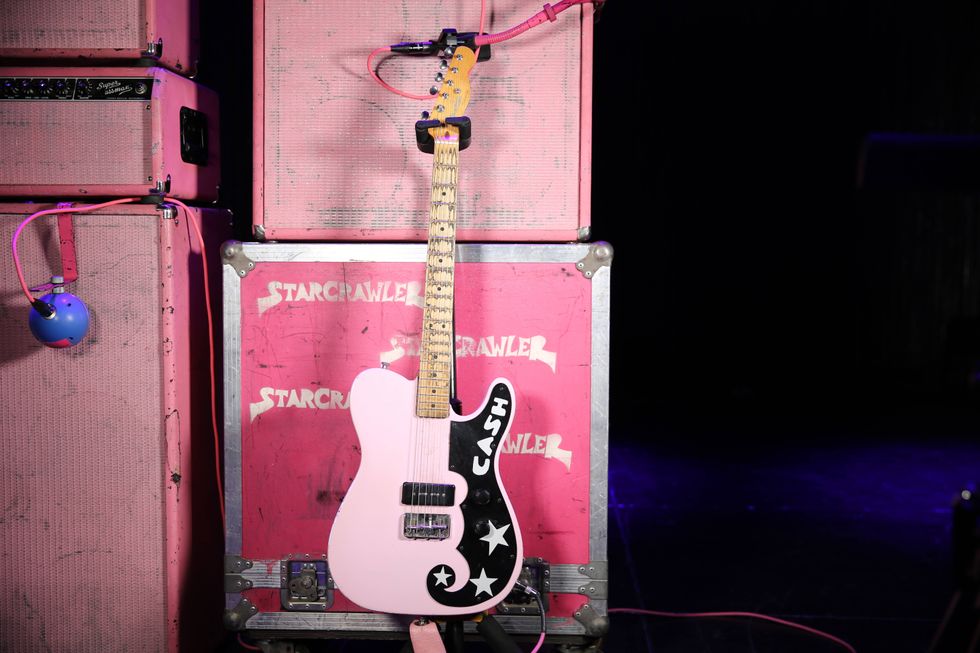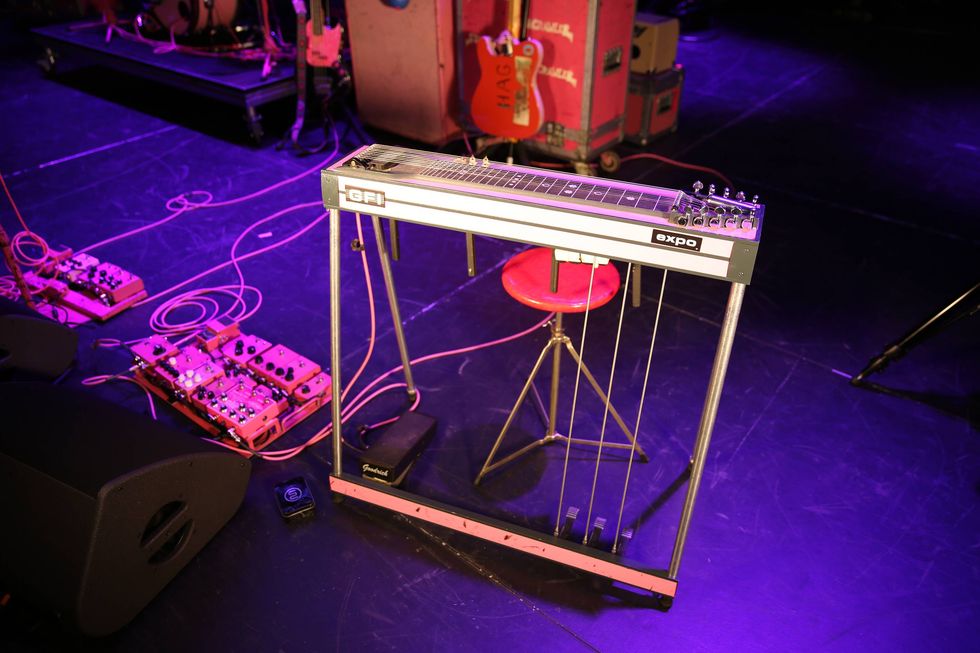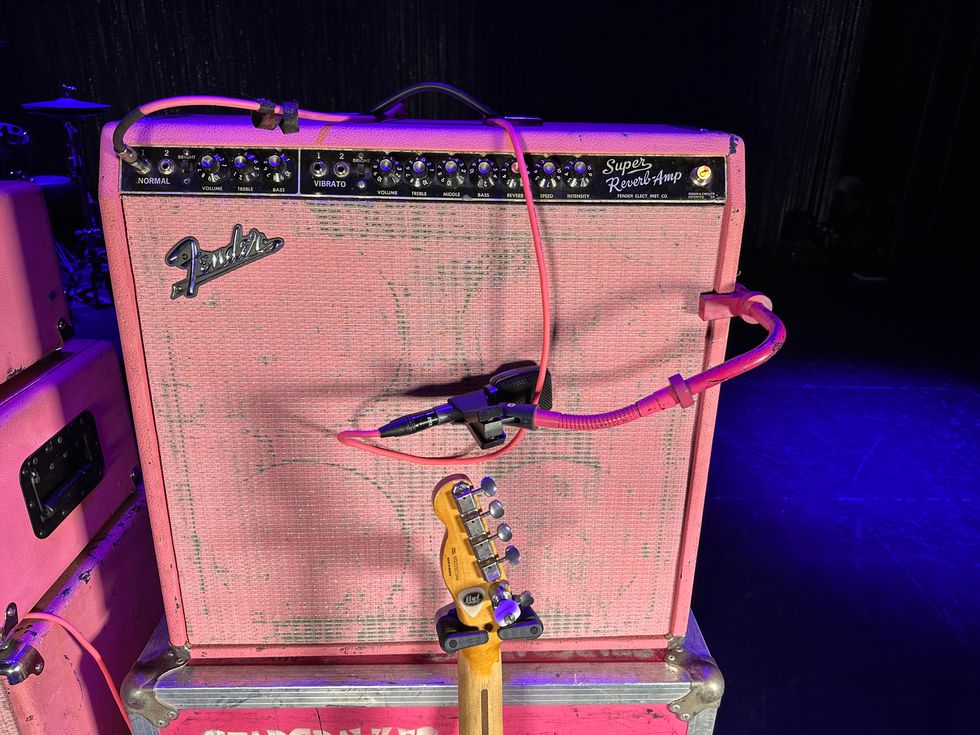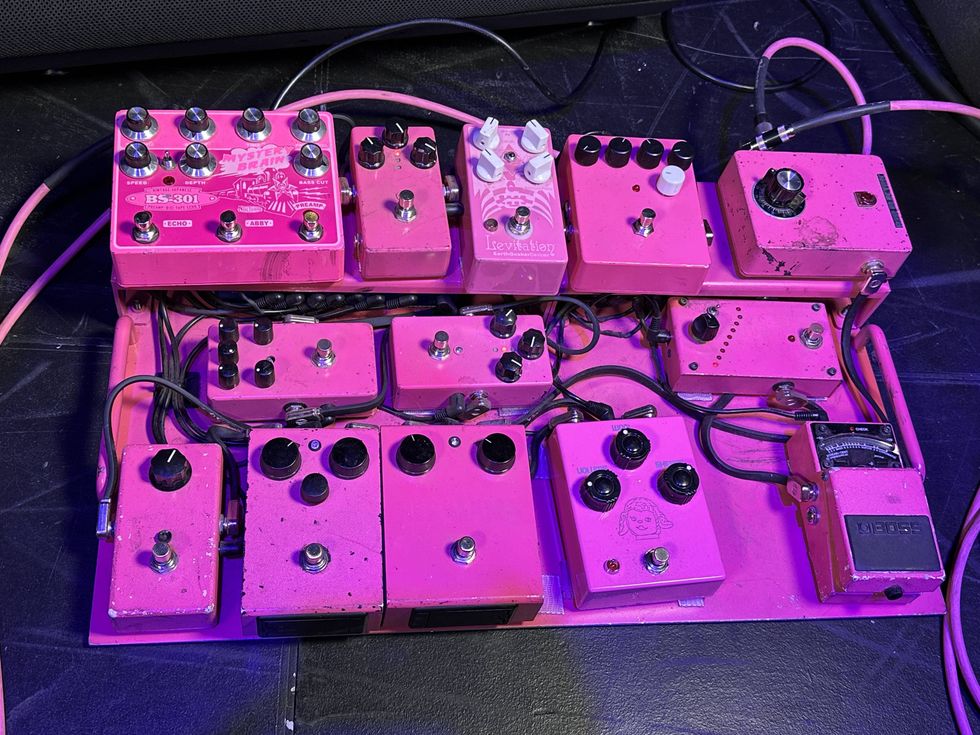Witness how this Ecuadorian-via-Switzerland duo evokes everything that’s beautiful and bleak from the desert, using hollowbodies, a serendipitous Strymon, and rhythmic hypnosis to paint an Ennio Morricone soundscape.
When some people travel, they take photos on their phone to remember the trip. Old-soul voyagers will recount their adventures with pen and paper. But for Alejandro and Estevan Gutiérrez, who together make the globetrotting Ecuadorian-Swiss duo Hermanos Gutiérrez, their experiences conjure soundtracks, and a visit years ago to the American Southwest changed their sound forever.
A couple years after forming their duo, the brothers took a trip through Death Valley and the Mojave Desert. “It just blew our minds,” Estevan told PG. The desert, he says, “is where our music was born.”
“Part of what we’re doing is traveling together as brothers,” Alejandro told PG in 2022. “We go to places, we come back and we’re feeling inspired, and we feel like we’ve gotta write something about this place.”
After finding bountiful inspiration in the West, the duo began turning out mystical compositions, like sonic souvenirs and passport stamps on their consciousness. “It’s just beautiful where we can go with this music,” Alejandro said last year. “It’s just my brother and I together, and we’re so happy to have this.”
The sold-out Hermanos Gutiérrez concert at Nashville’s Basement East on June 20th marked their first time performing in Music City since recording El Bueno Y El Malo with Dan Auerbach at Easy Eye Sound in 2022. The pair invited PG’s Chris Kies onstage to decode their spellbinding cinematic sounds. The conversation touched on their symbiotic alchemy, enchanting hollowbodies, and how a single Strymon reset their slow-burn backdrop.
Brought to you by D’Addario Nexxus 360 Tuner.Black Mamba
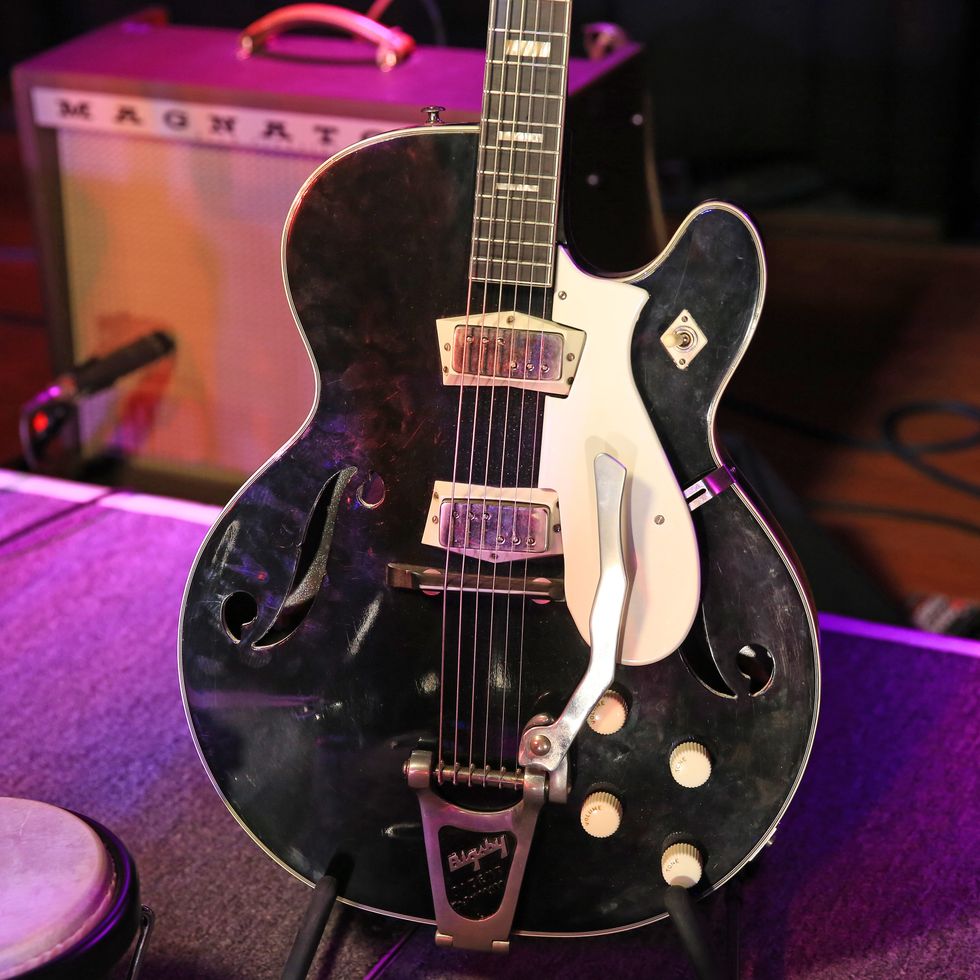
Like their muse the desert, the brothers’ setups are sparse. Each one totes a single hollowbody. Alejandro travels with his 1963 Silvertone 1446, which is stock except for a refret and custom-made, snake-like Bigsby arm, both done by longtime Dan Auerbach tech Dan Johnson. (You might recognize Dan from his three different Black Keys Rig Rundowns. Check out the latest one from 2019!)
Alejandro is a fingerstyle player (inspired by Estevan) and, at the suggestion of Johnson, uses Pyramid Gold Heavy (.013–.052).
Silver Serpent
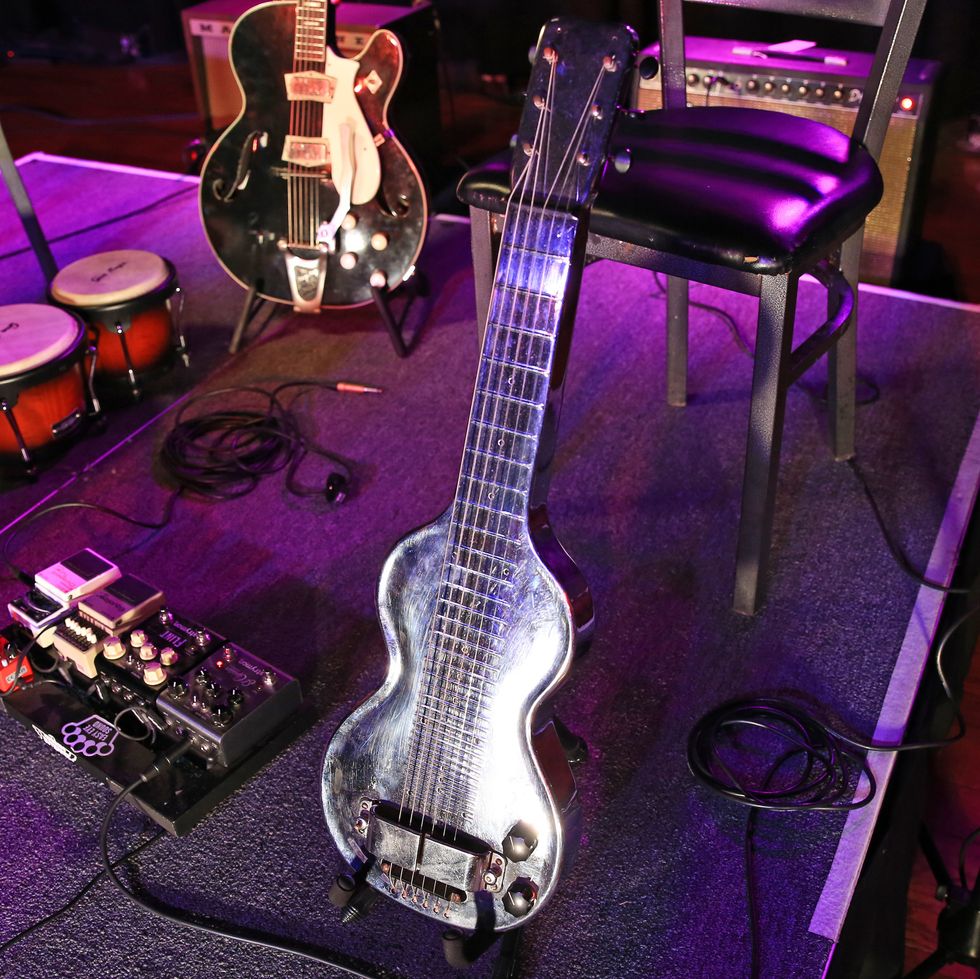
For songs like “Tres Hermanos,” Alejandro gets down with this 1940s Rickenbacker Electro NS lap steel.
Snakecharmer
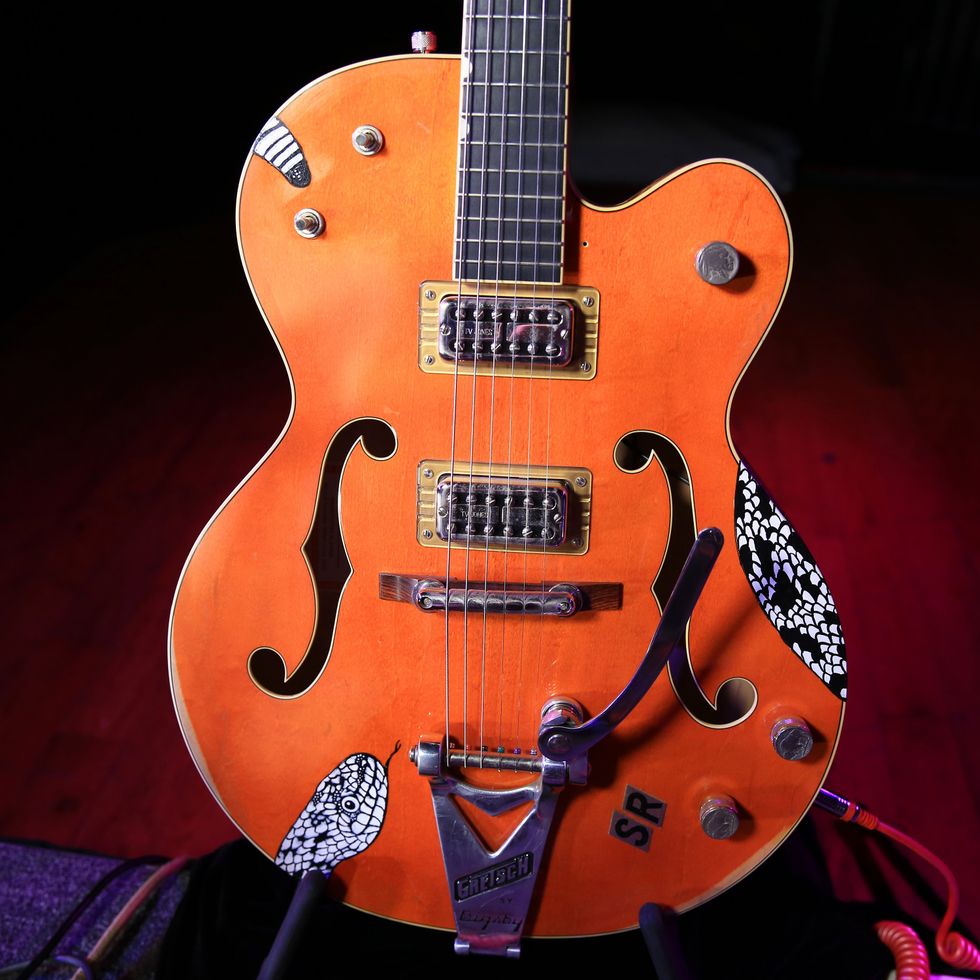
Estevan connected with Dan Auerbach’s 1958 Gretsch 6120 “Rudy” while tracking El Bueno Y El Malo at Easy Eye Sound last year. For road duties, he never leaves home without his own Gretsch G6120T-59 Vintage Select 1959 Chet Atkins hollowbody. Inspired by a random YouTube video of an older gentleman playing Santo & Johnny’s “Sleep Walk,” Estevan built a partnership with the 6120. “I’ve tried many, many guitars, but none of them gives me the sound that is me except this Gretsch,” he says. Estevan puts D’Addario EXL 115 (.011–.049) strings on his creamy crusader.
Slither
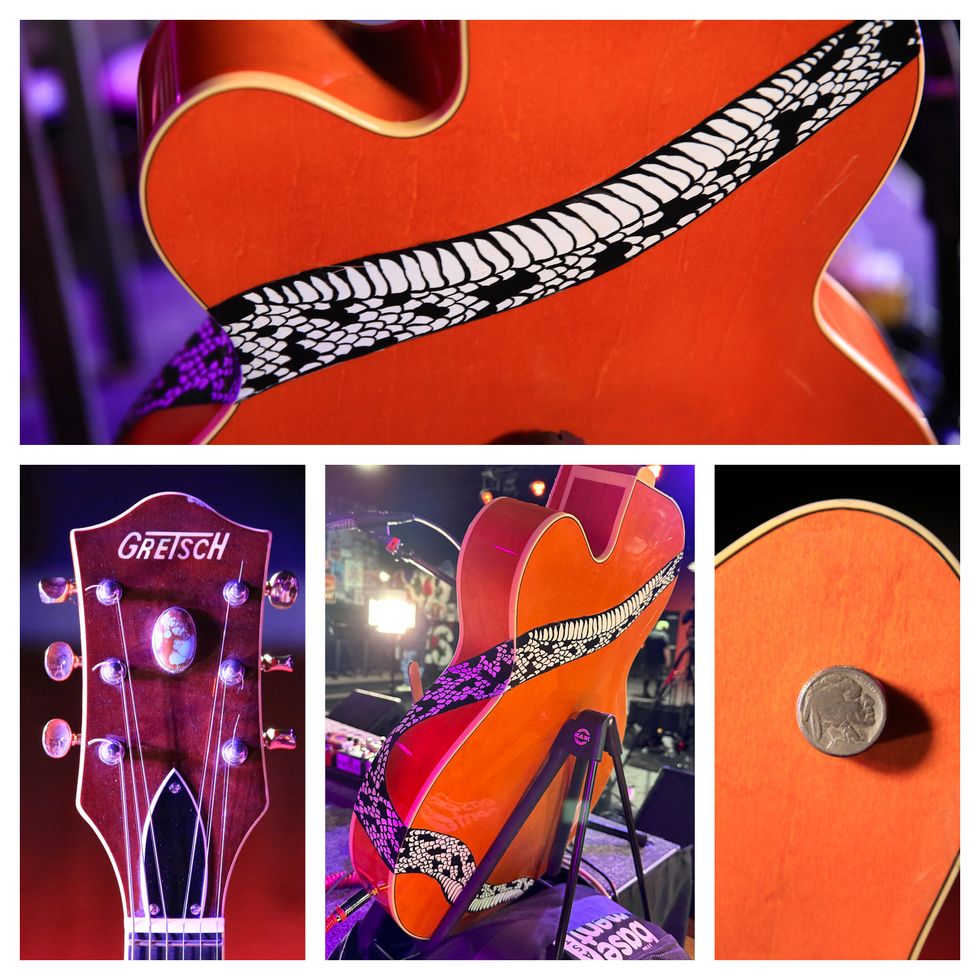
Check out all the hip hardware substitutions and rattlesnake-approved artwork on Estevan’s 6120.
Lucky Loaner
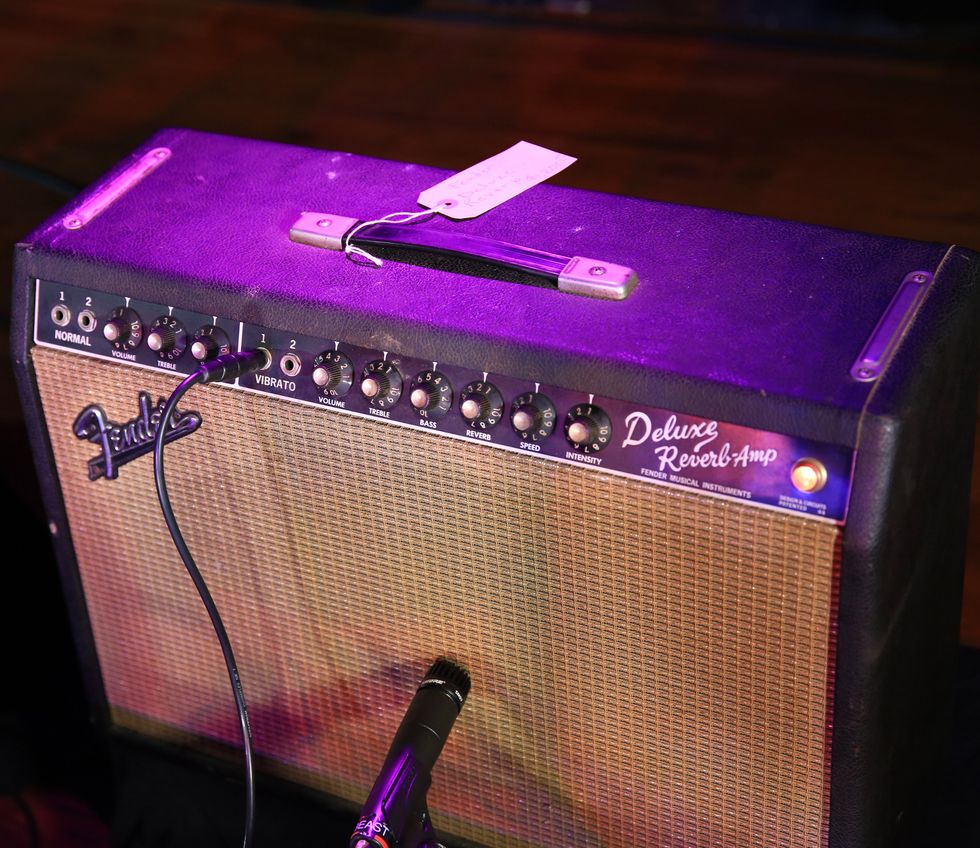
Given that Nashville and Easy Eye have become an oasis for Hermanos Gutiérrez, it makes sense they would take advantage of the studio’s library of vintage and vibey gear. For the Basement East show, Alejandro borrowed a 1960s Fender Deluxe Reverb from Easy Eye and plugged into the first input of the vibrato circuit.
Spaghetti in Stereo
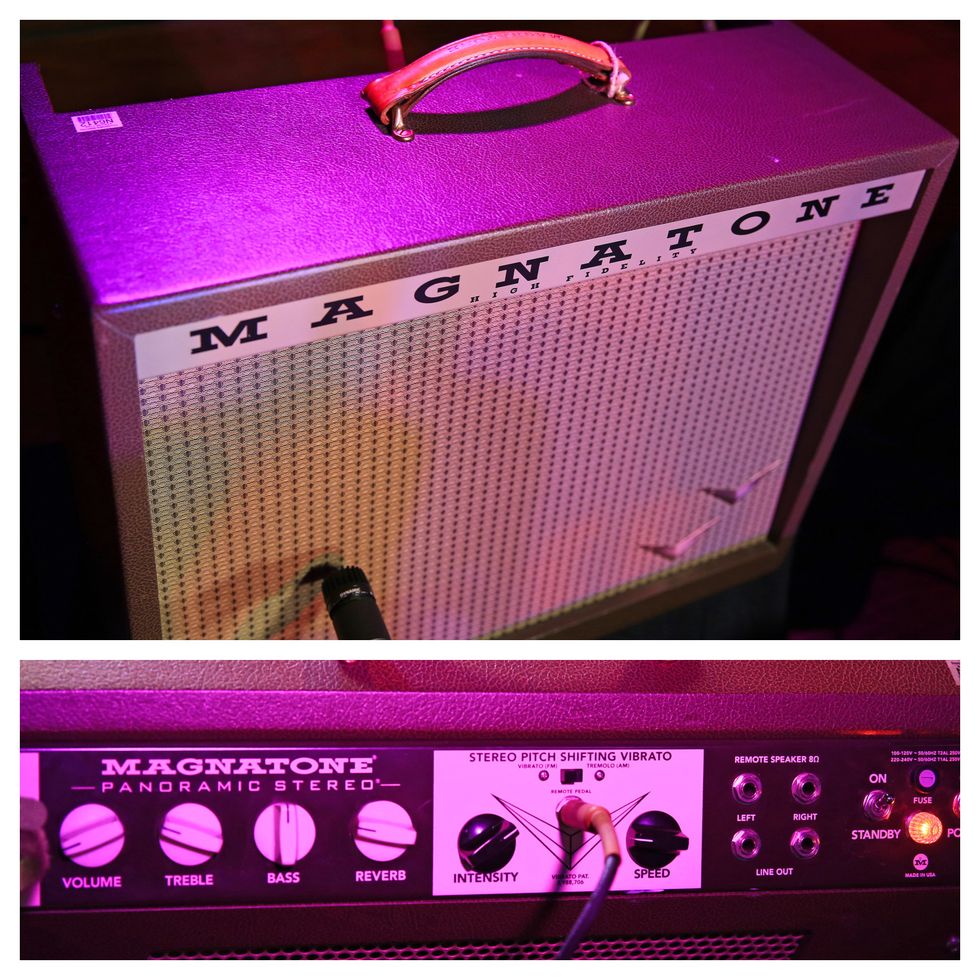
When creating El Bueno Y El Malo, Estevan plugged into Auerbach’s vintage Magnatone for the whole recording process. (You can really hear the amp’s magic vibrato pulsing during the album’s opening title track.) For this show, he compromised by running his 6120 into a modern Magnatone Panoramic Stereo model.
Alejandro Gutiérrez’s Pedalboard
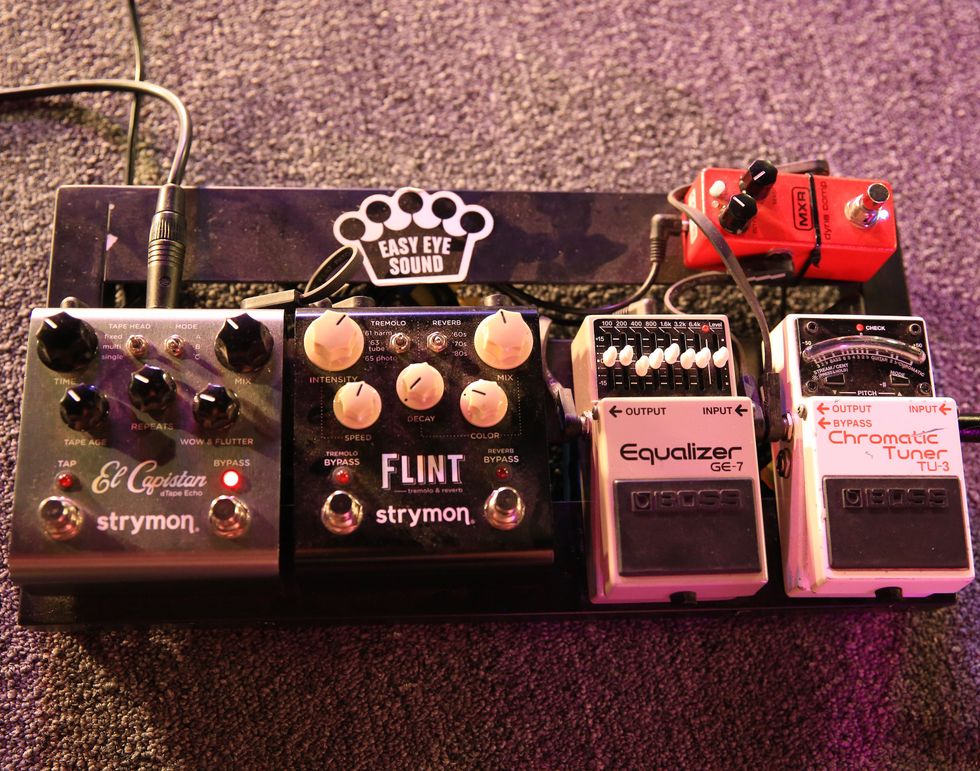
Alejandro packs light with a compact board that holds a MXR Dyna Comp Mini, a Boss GE-7 Equalizer, a Strymon Flint, and the influential Strymon El Capistan. While Estevan discovered the El Cap and unlocked its magic for Hermanos Gutiérrez (more on that in a second), Alejandro has molded it to his sound in different ways. “I use it as a layer,” he explains. “Really subtle. My brother uses it more as a delay. He has this horse sound, like this galloping sound he can create with his slapping, which only he can do.” A Boss TU-3 Chromatic Tuner keeps the Silvertone in line.
Estevan Gutiérrez’s Pedalboard
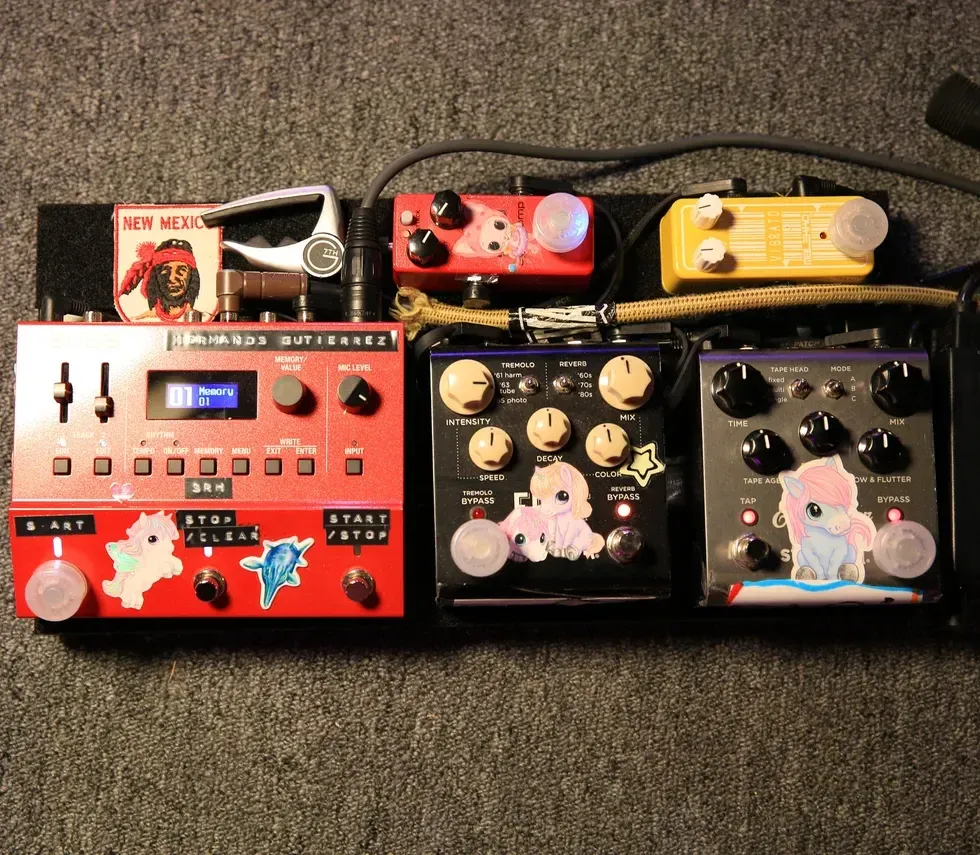
You can see that Estevan utilizes nearly every square inch of his pedalboard. Overlaps between the brothers’ boards include the MXR Dyna Comp Mini, the Strymon Flint, and the aforementioned Strymon El Capistan. You might think their setup is basic now, but they used to play sans pedals. Eventually, Estevan discovered the Strymon El Capistan, and their sound was never the same. “I remember that day,” he recounted to PG about first playing the pedal. “I fell in love. I knew it was gonna change something in our sound.” As soon as he purchased the El Capistan, he called his brother and said, “You have to buy this. This is gonna be next level for us.”
The remaining effects for Estevan include a Malekko Omicron Vibrato, a Boss RC-500 Loop Station, and a Boss TU-3 Chromatic Tuner (off the board) keeps his Gretsch in check. Lastly, you’ll notice a G7th Performance 3 ART Capo on the pedalboard, too.





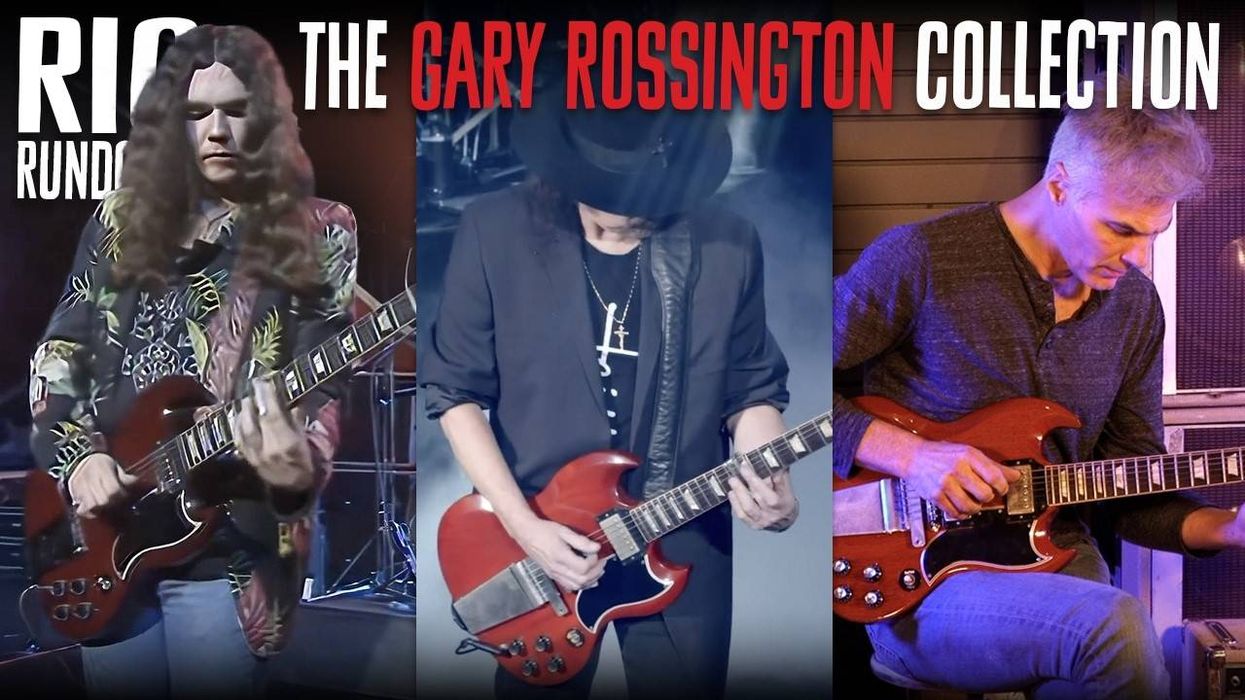
![Rig Rundown: Russian Circles’ Mike Sullivan [2025]](https://www.premierguitar.com/media-library/youtube.jpg?id=62303631&width=1245&height=700&quality=70&coordinates=0%2C0%2C0%2C0)
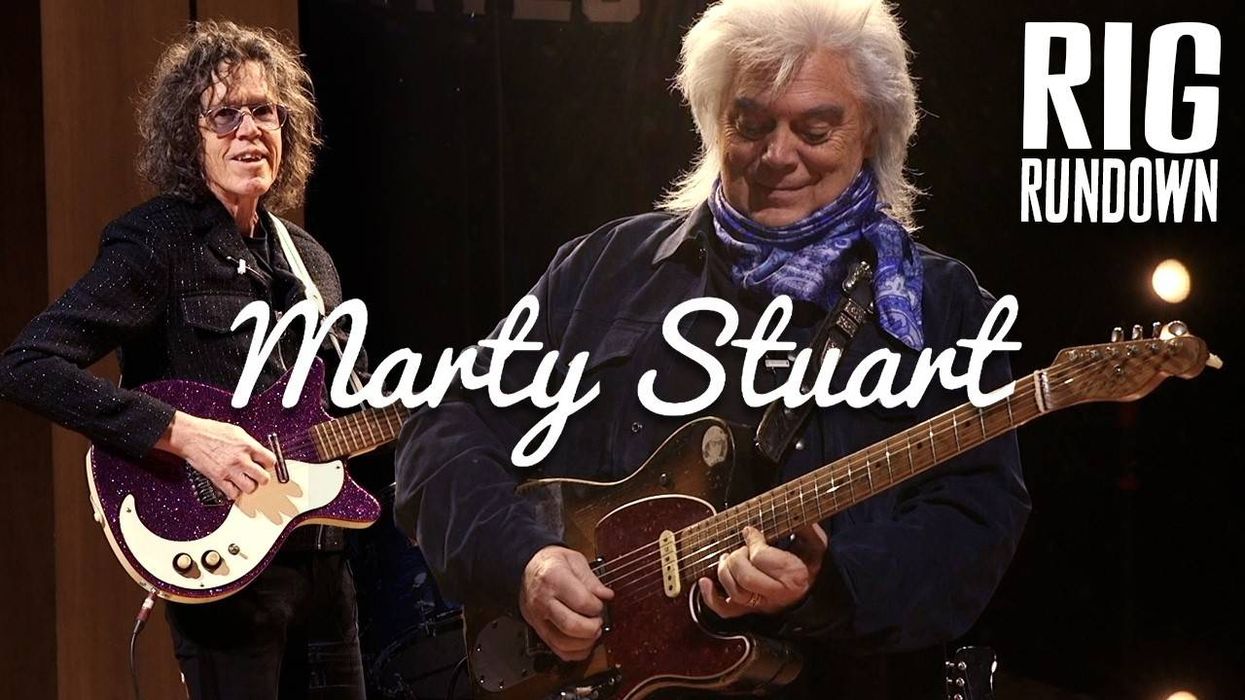
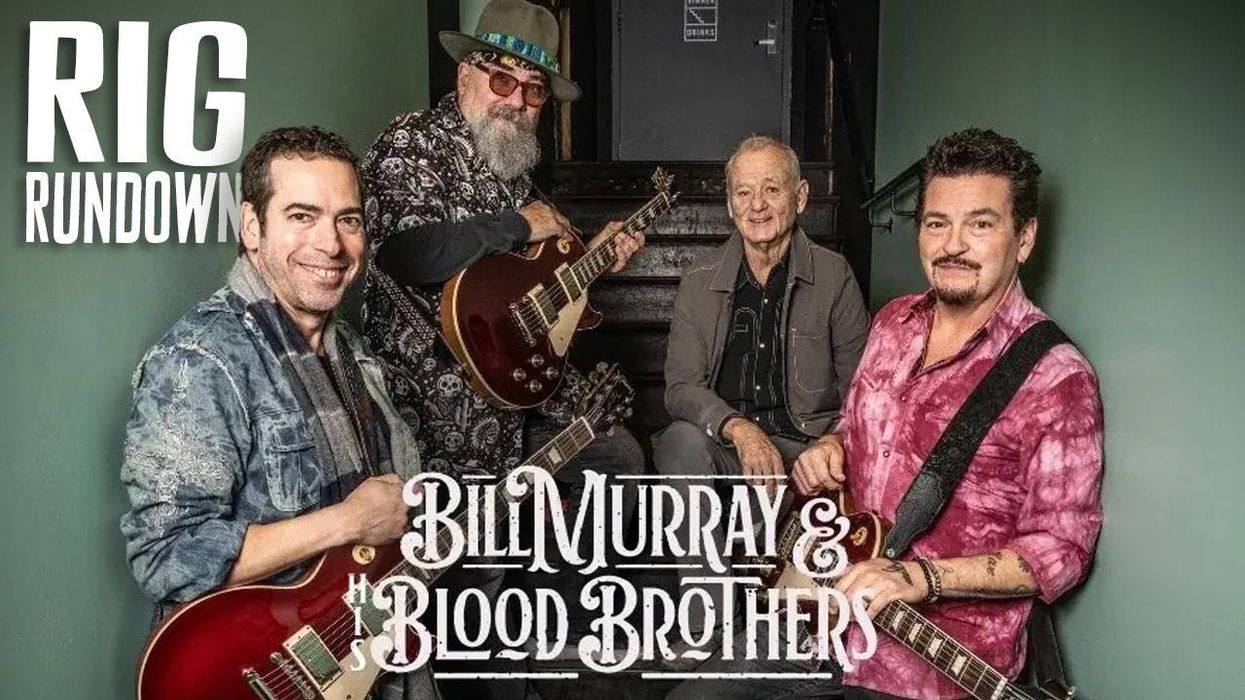
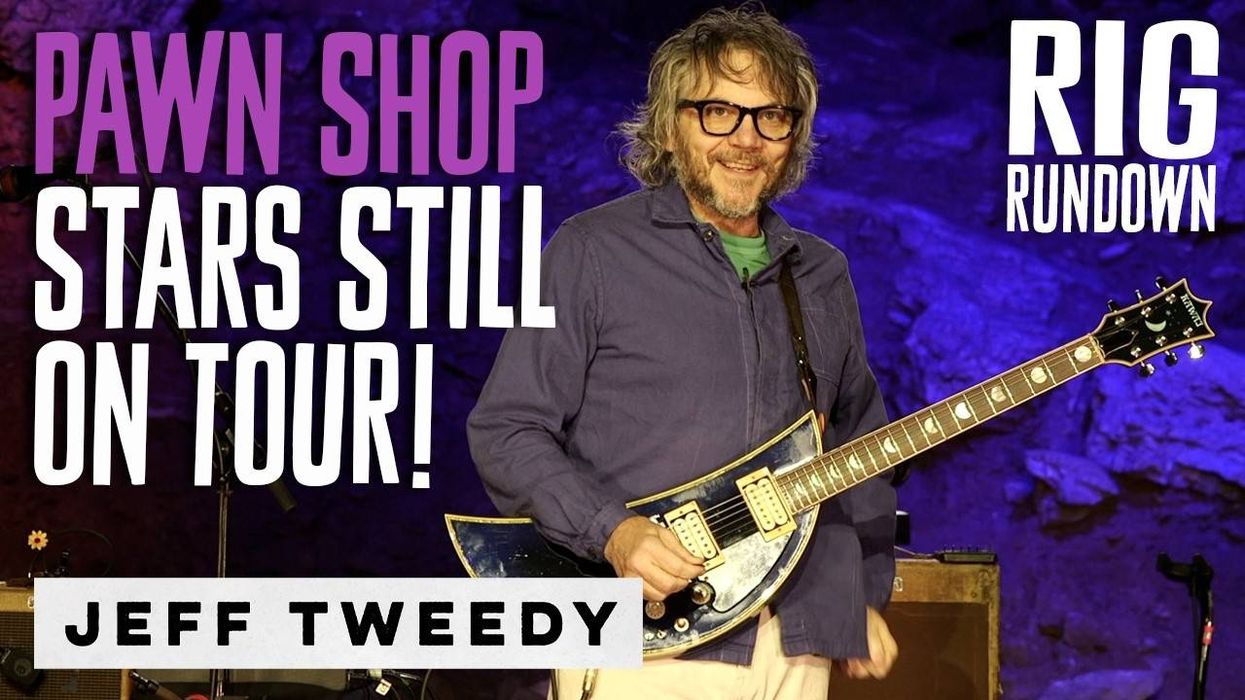
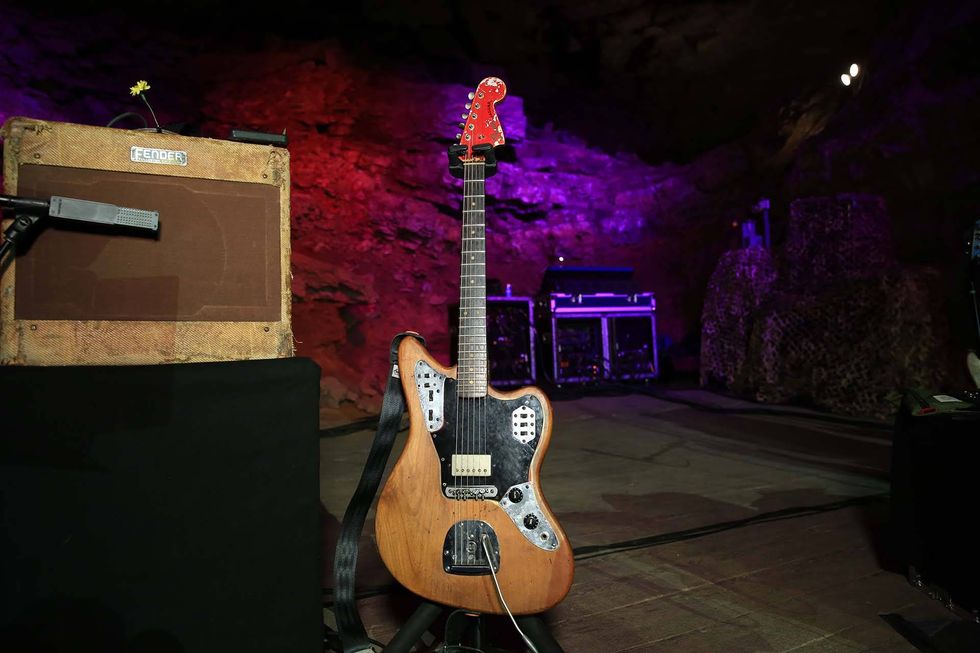
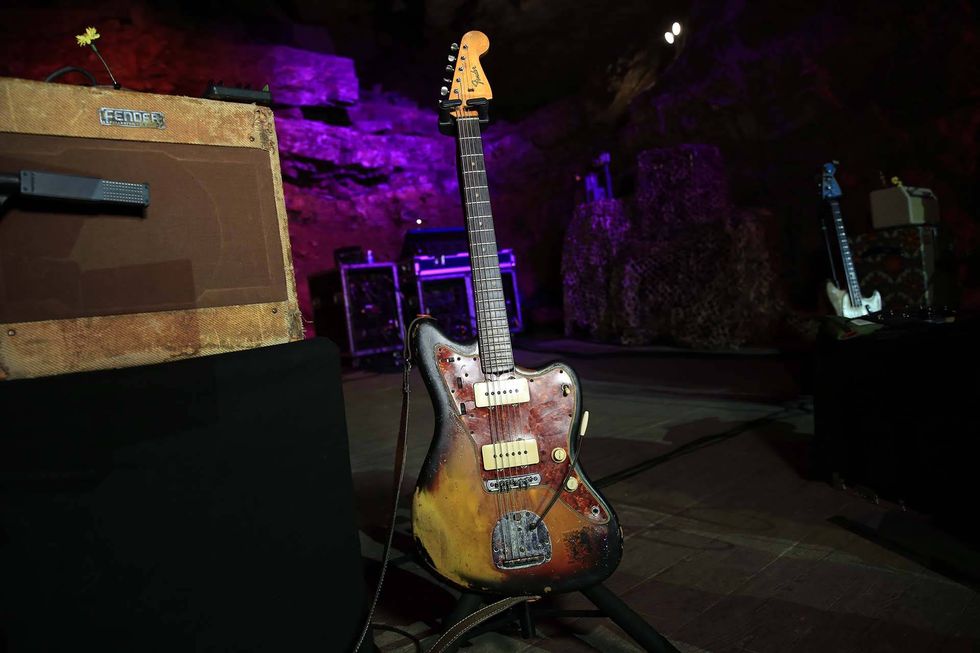
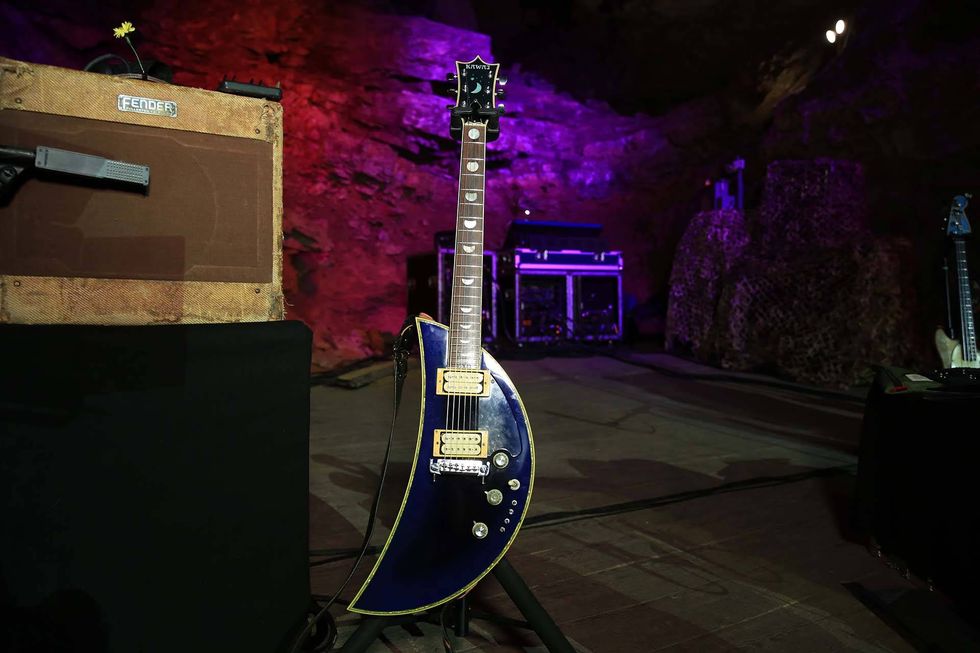
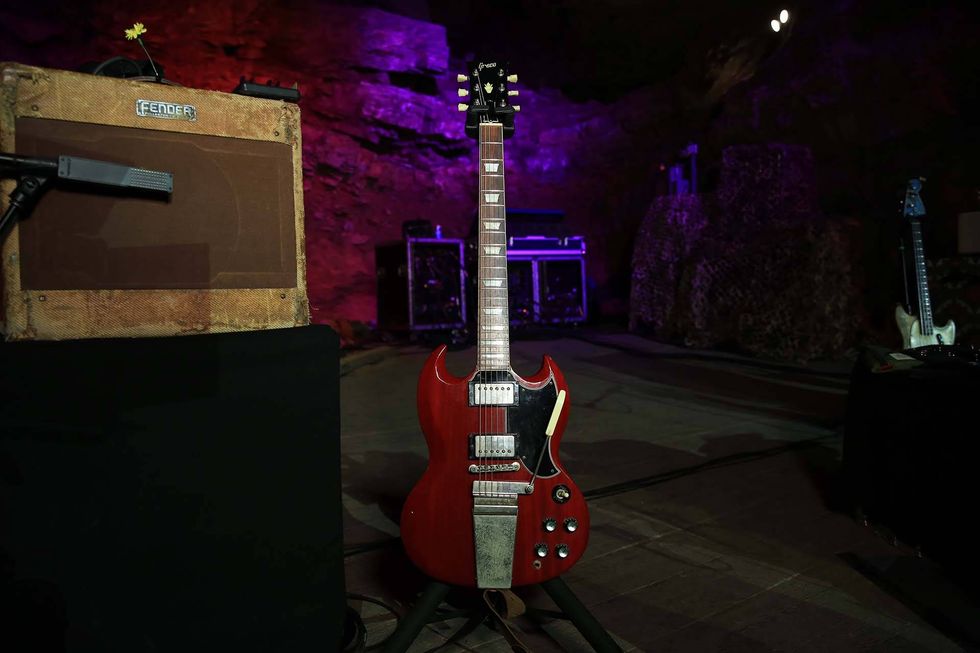
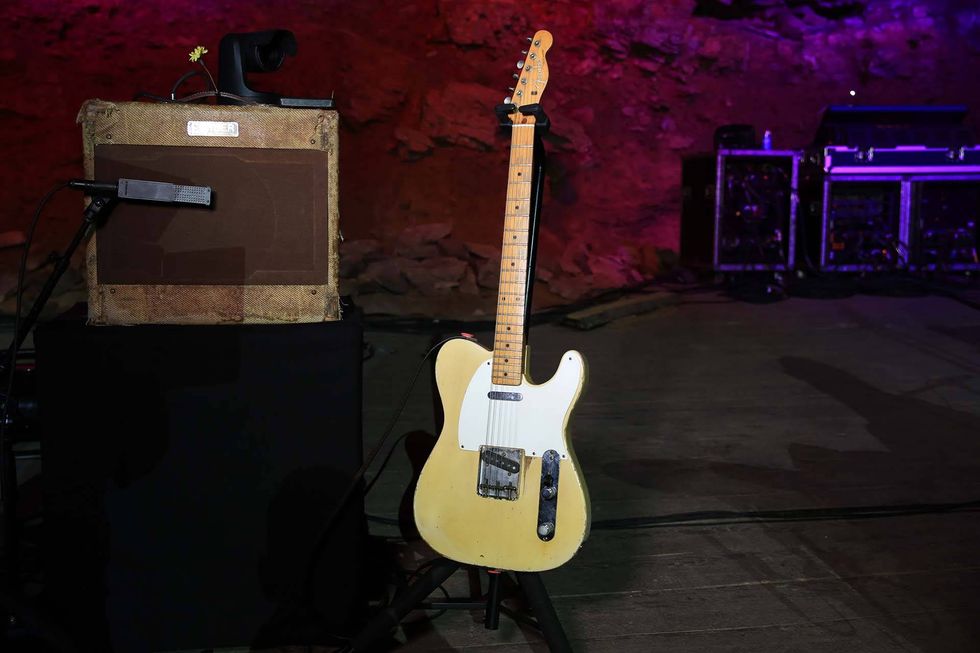
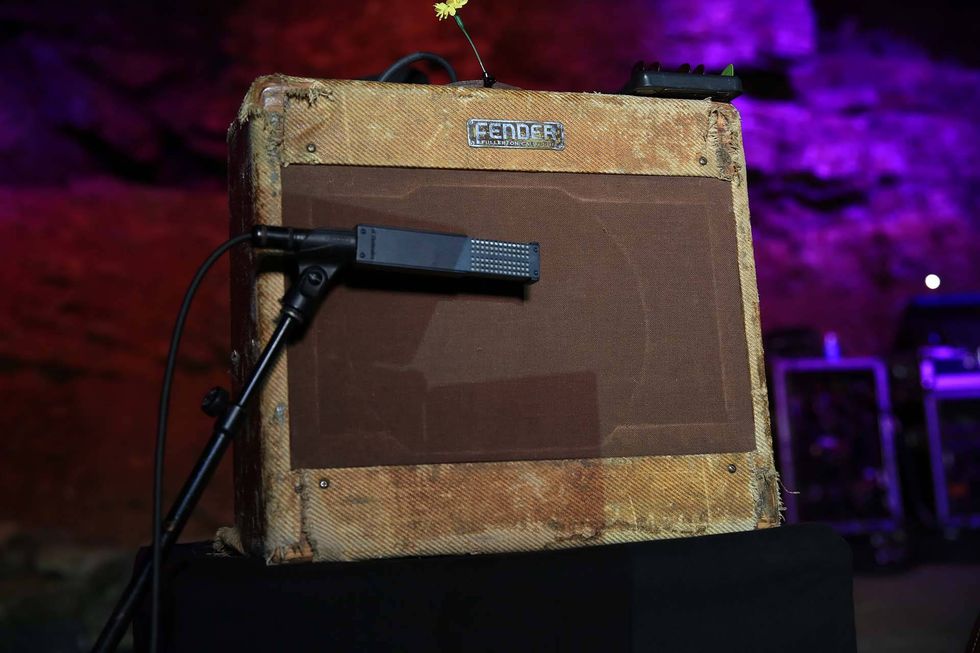
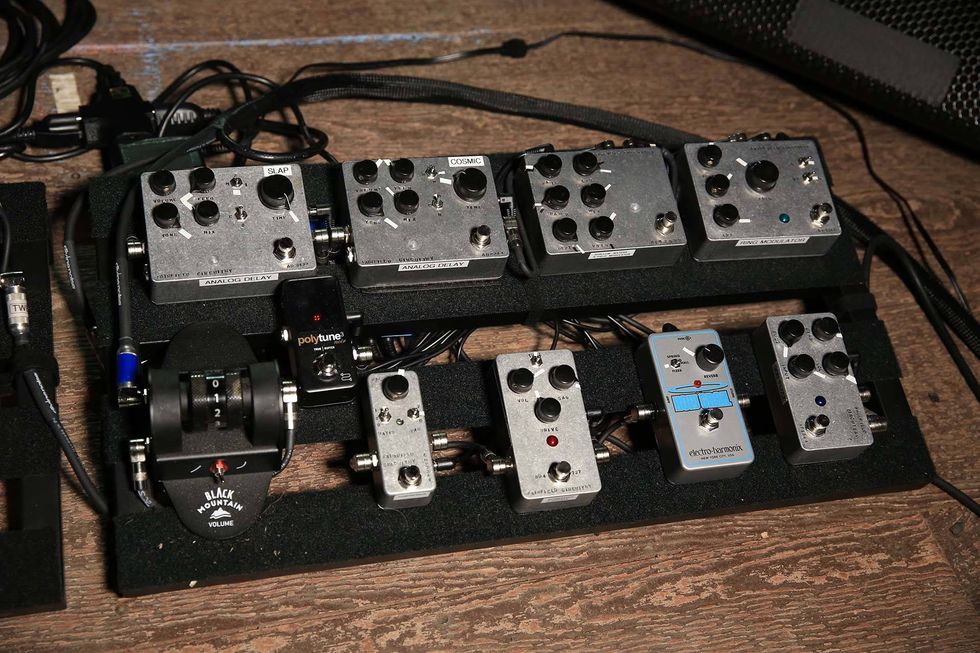
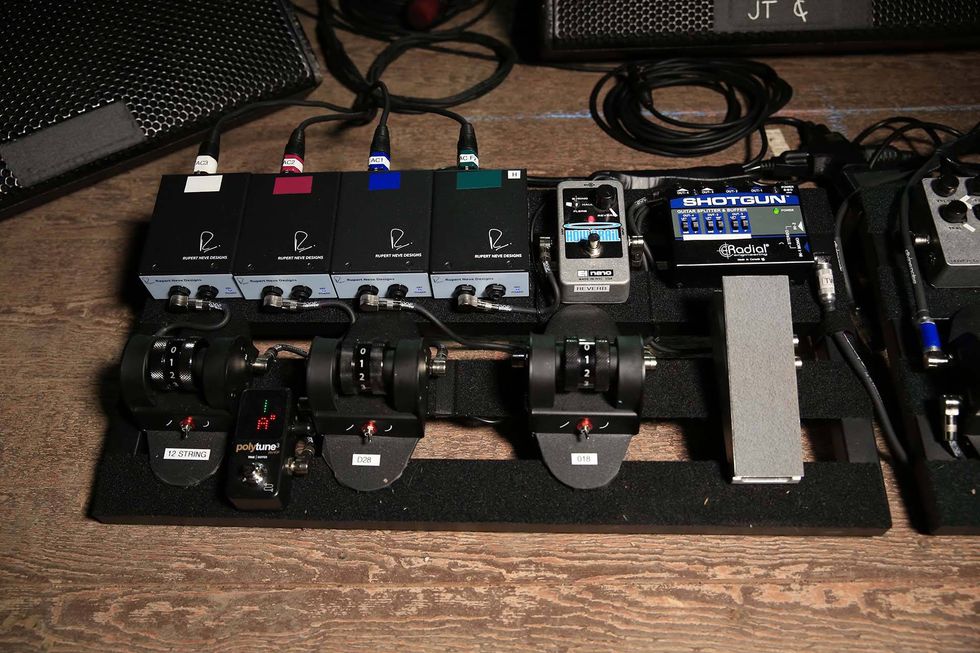

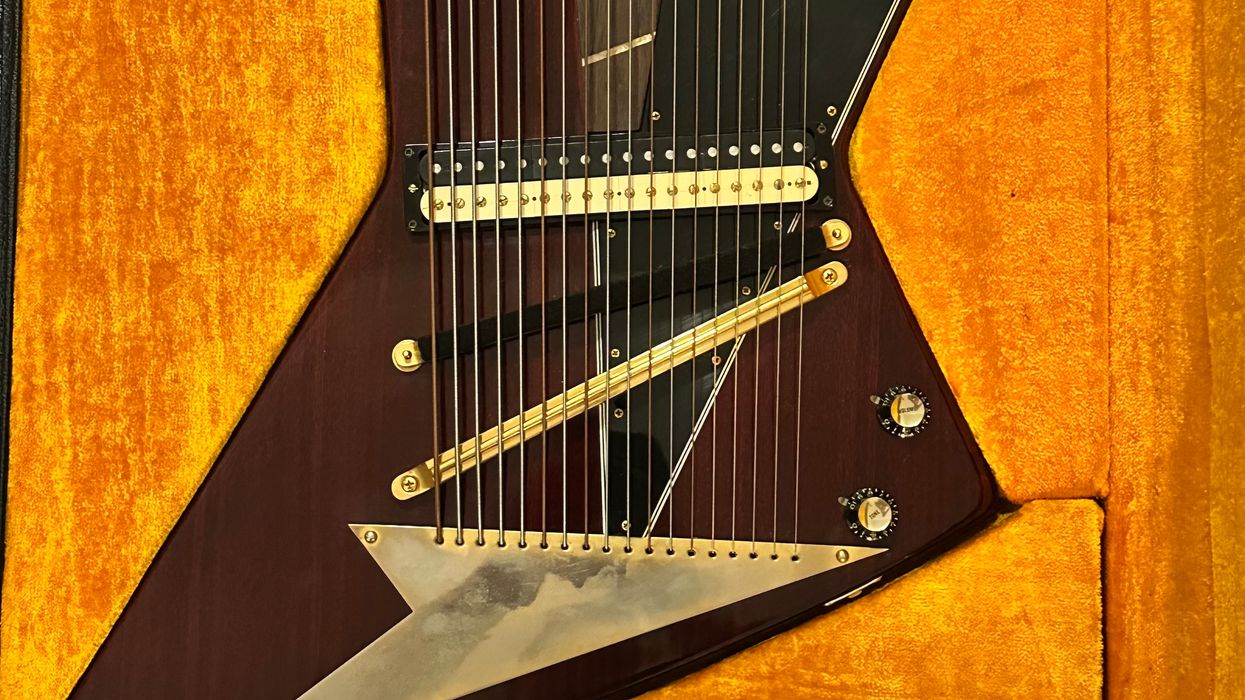
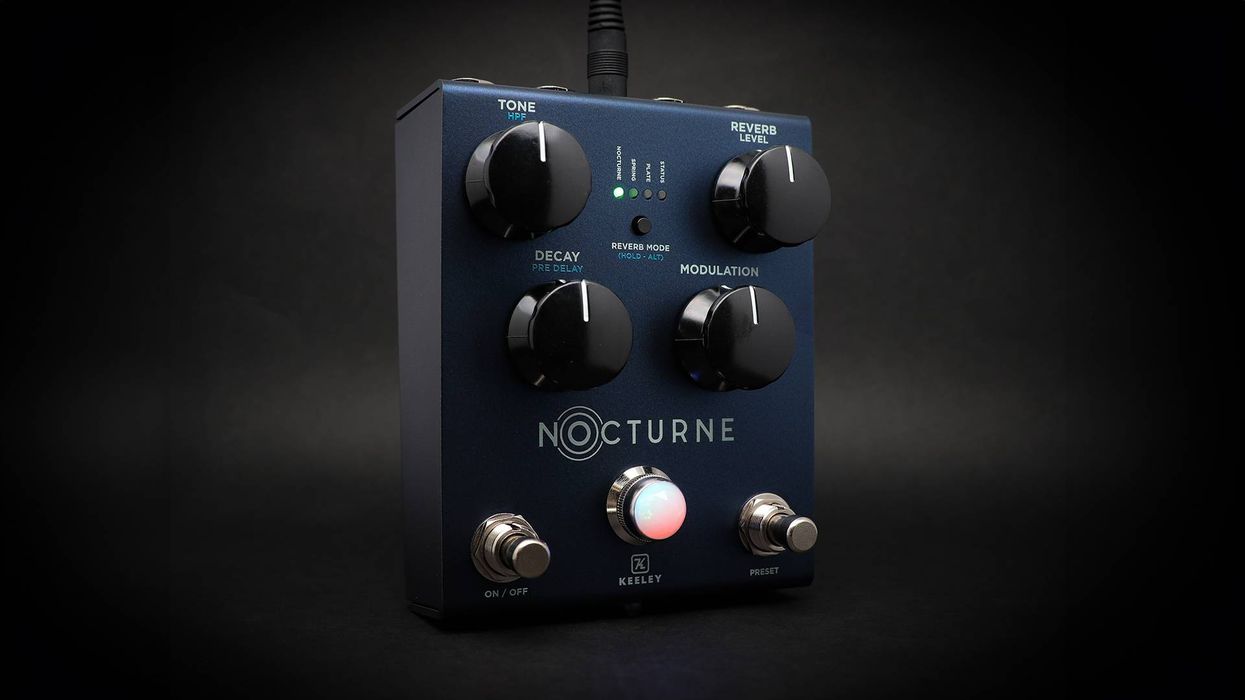
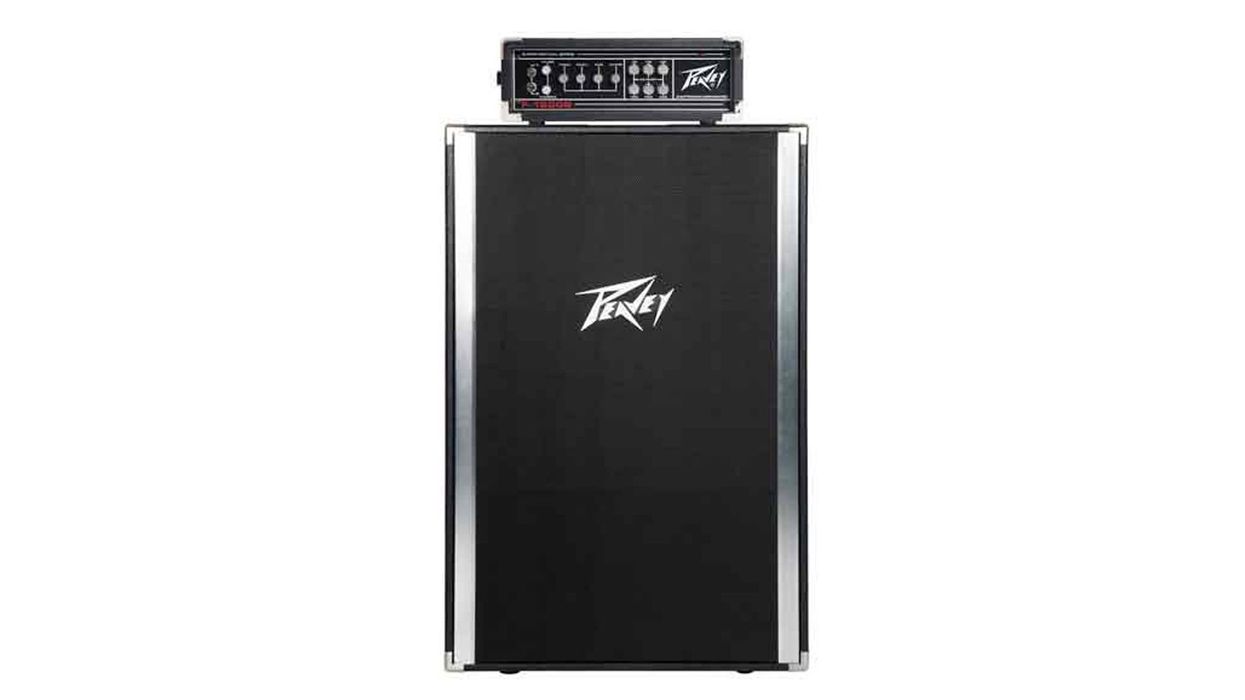
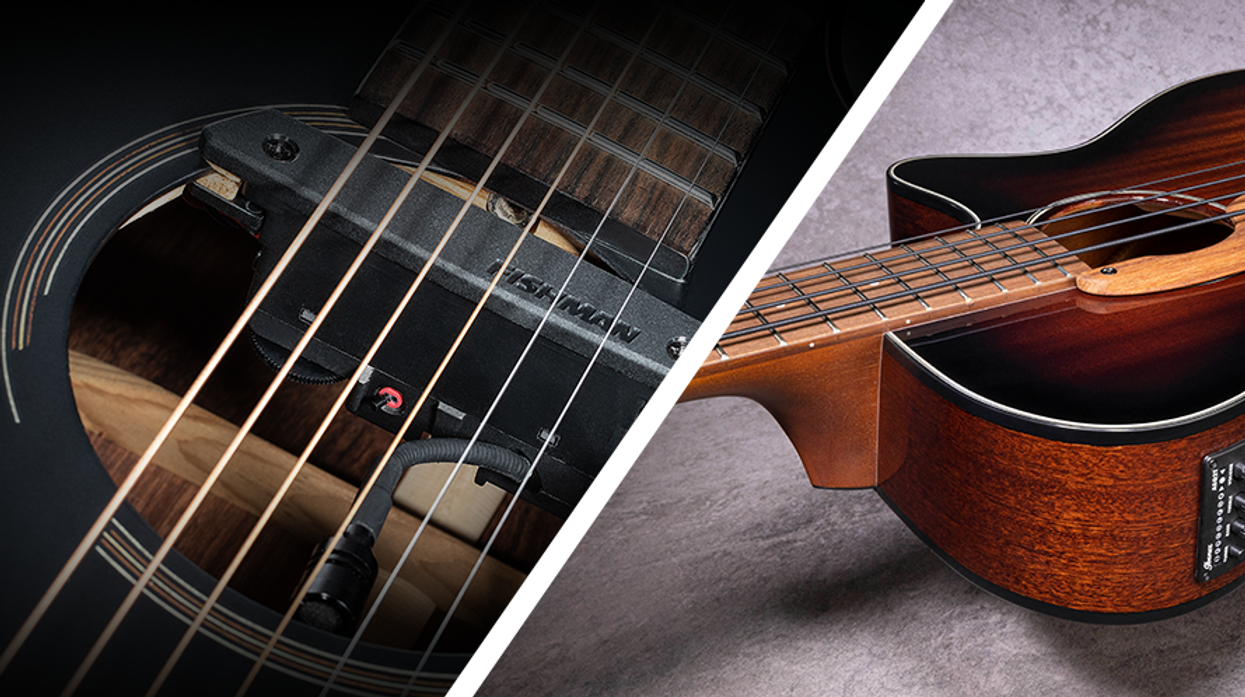
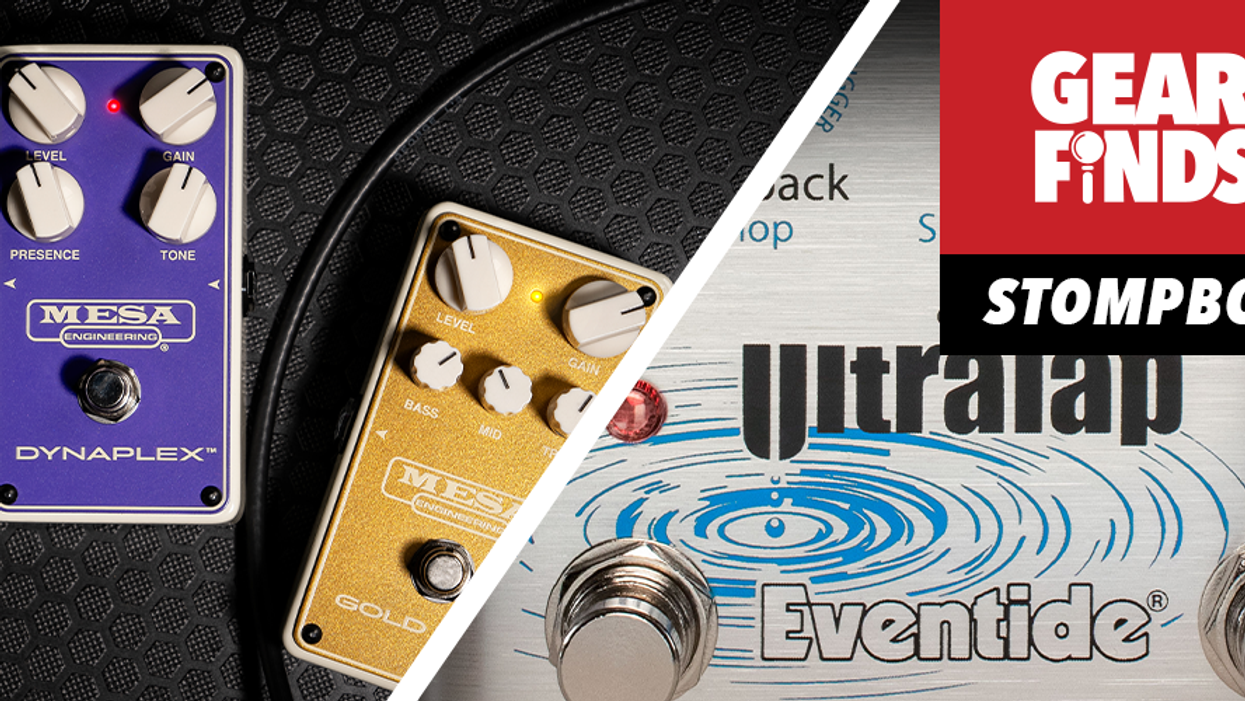
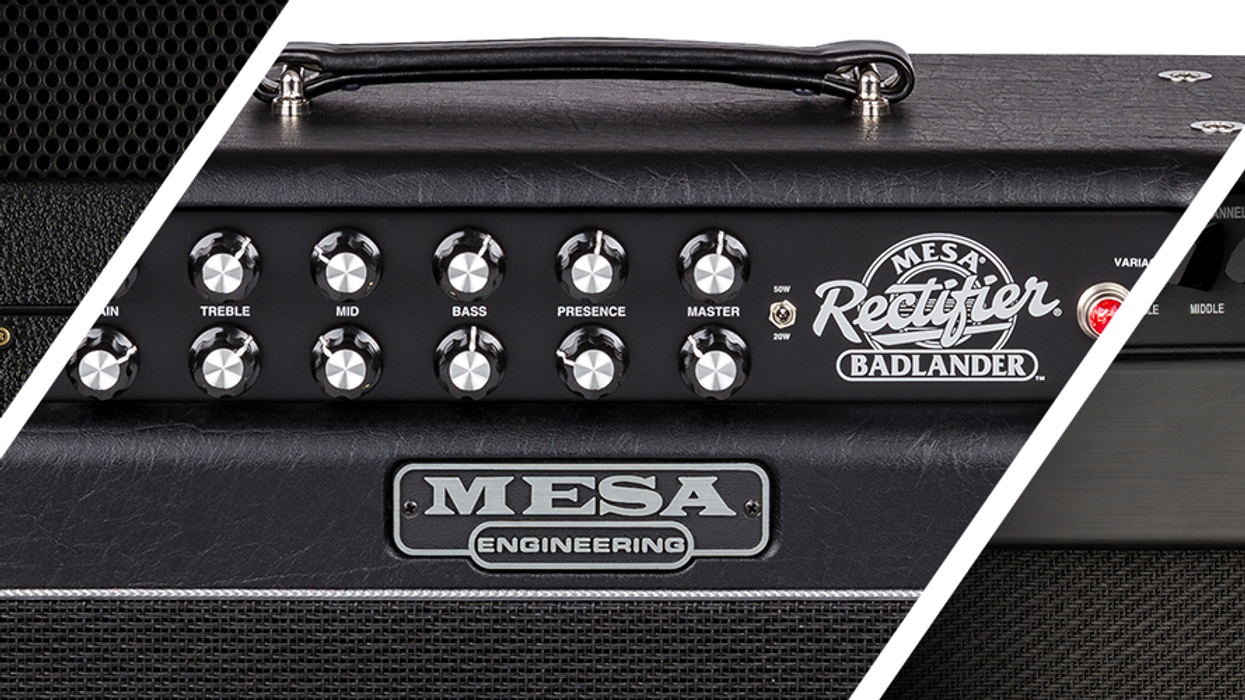
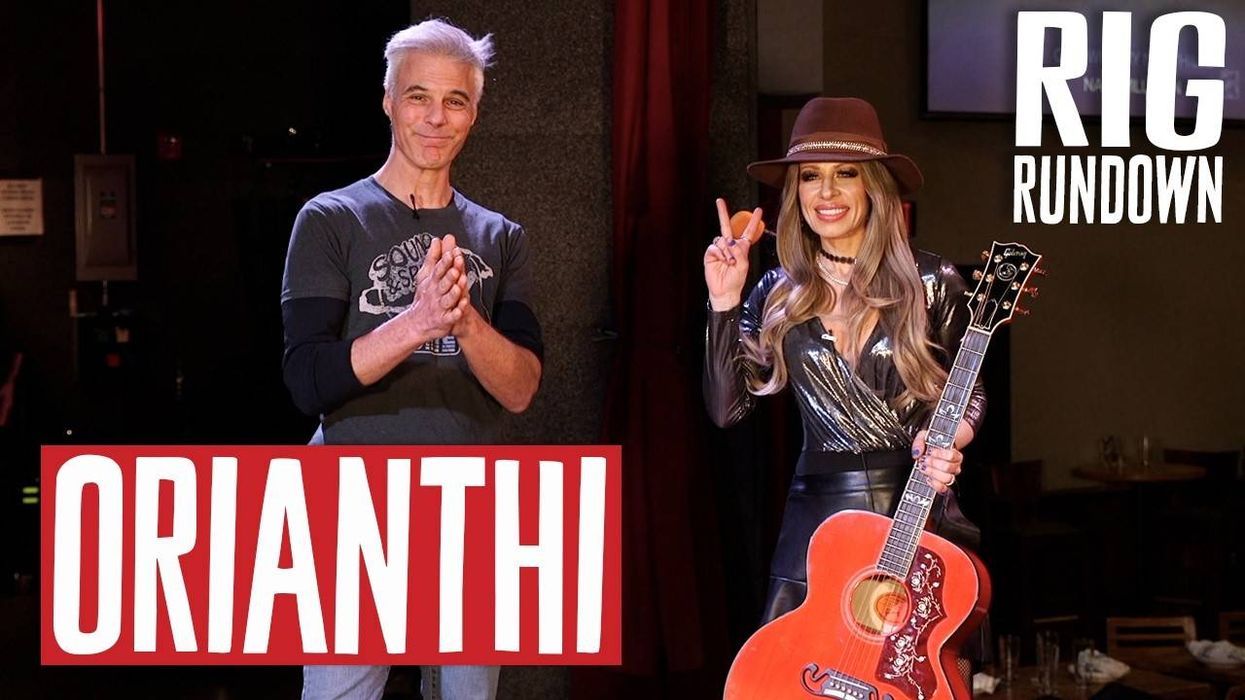
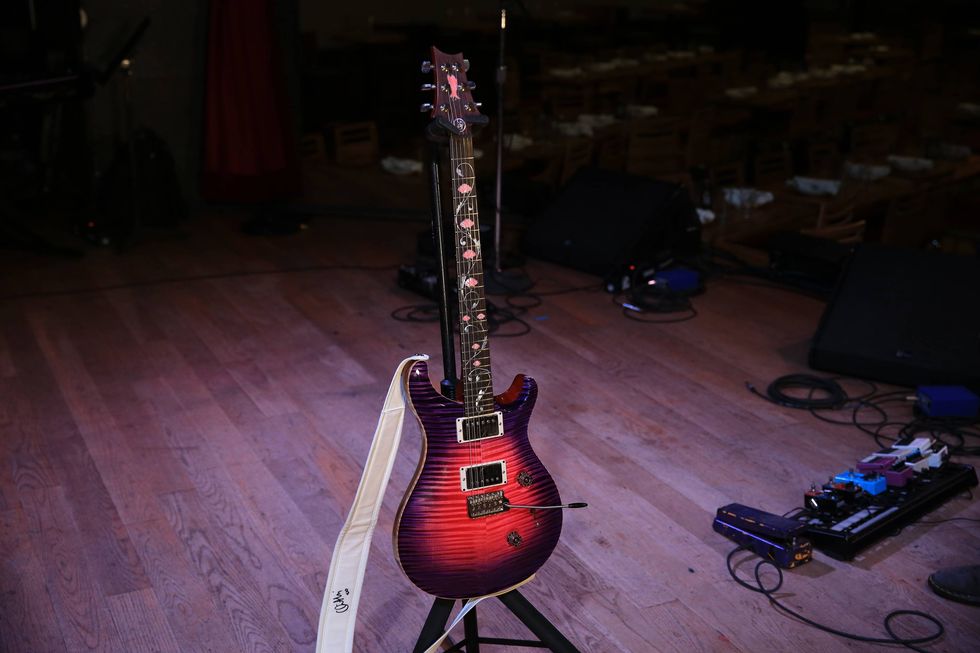
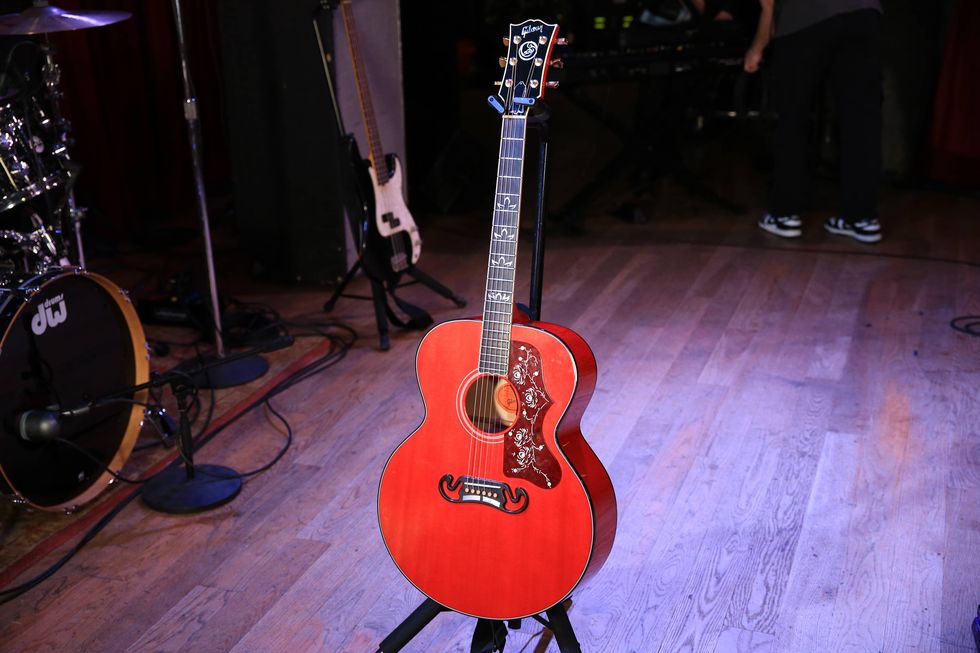
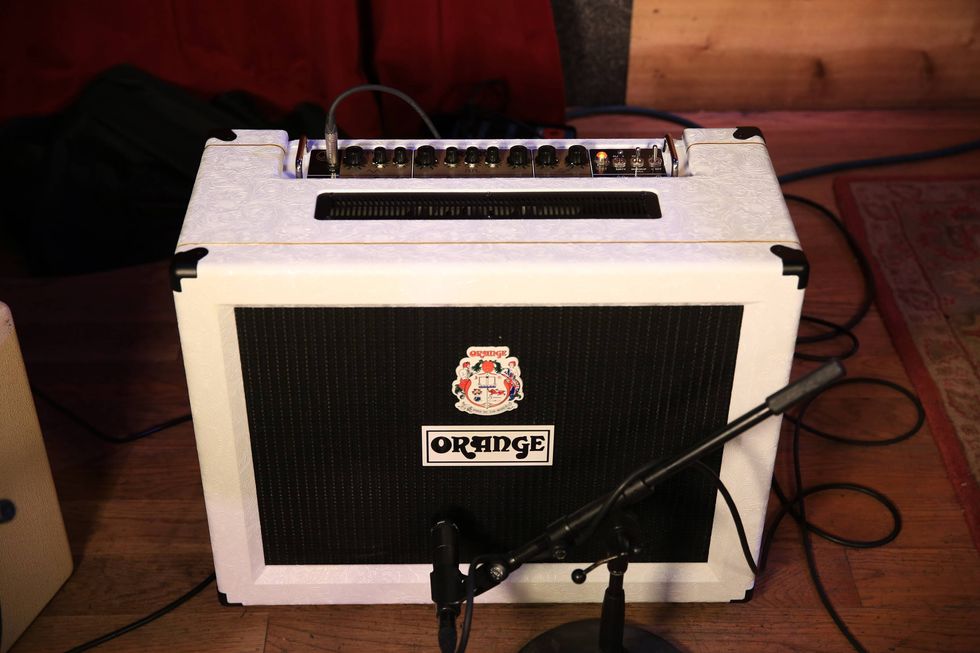
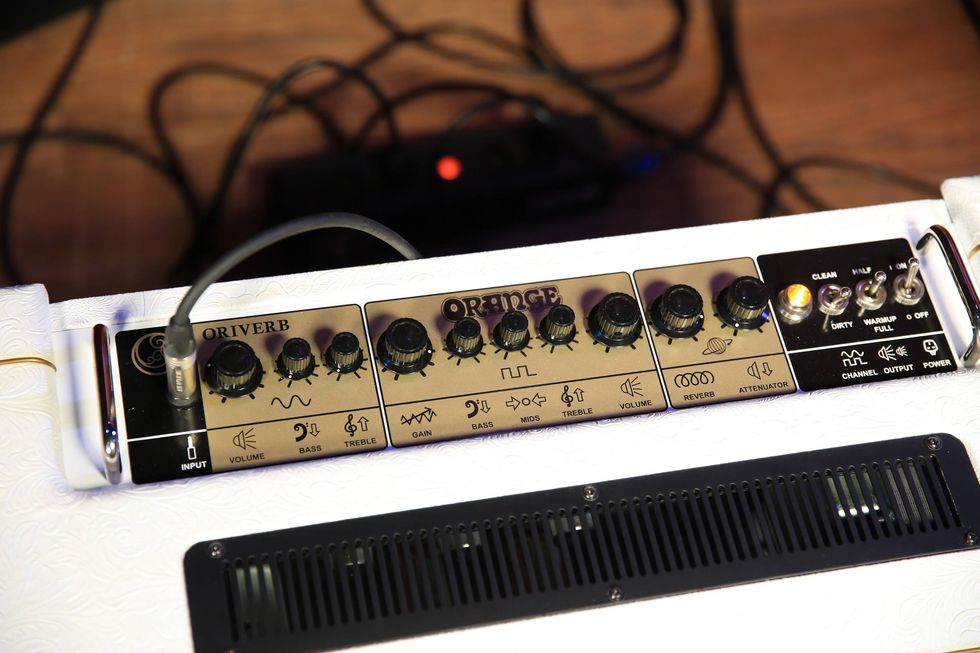
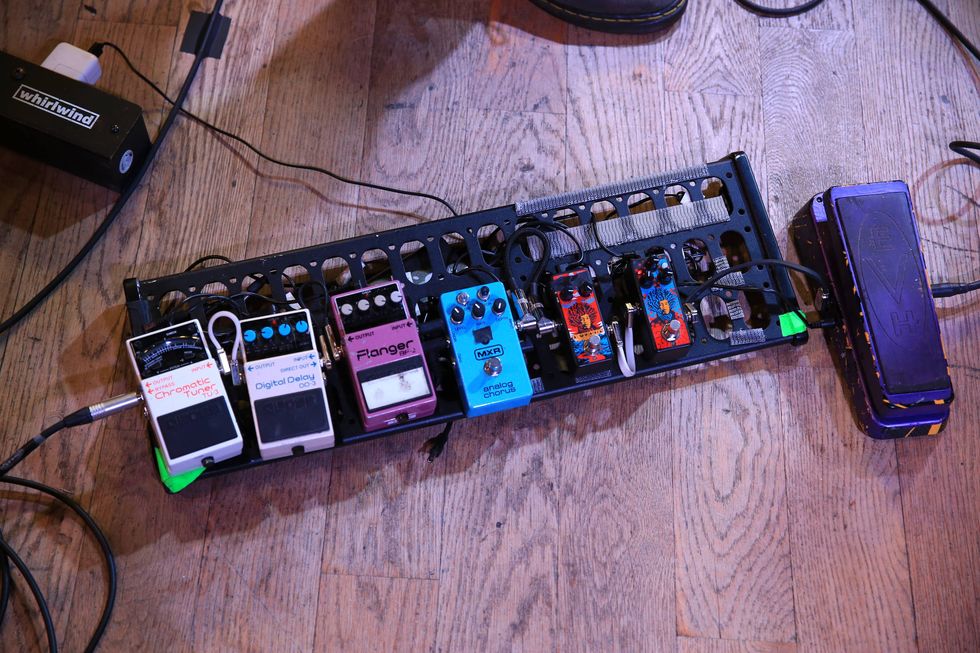

![Rig Rundown: AFI [2025]](https://www.premierguitar.com/media-library/youtube.jpg?id=62064741&width=1245&height=700&quality=70&coordinates=0%2C0%2C0%2C0)
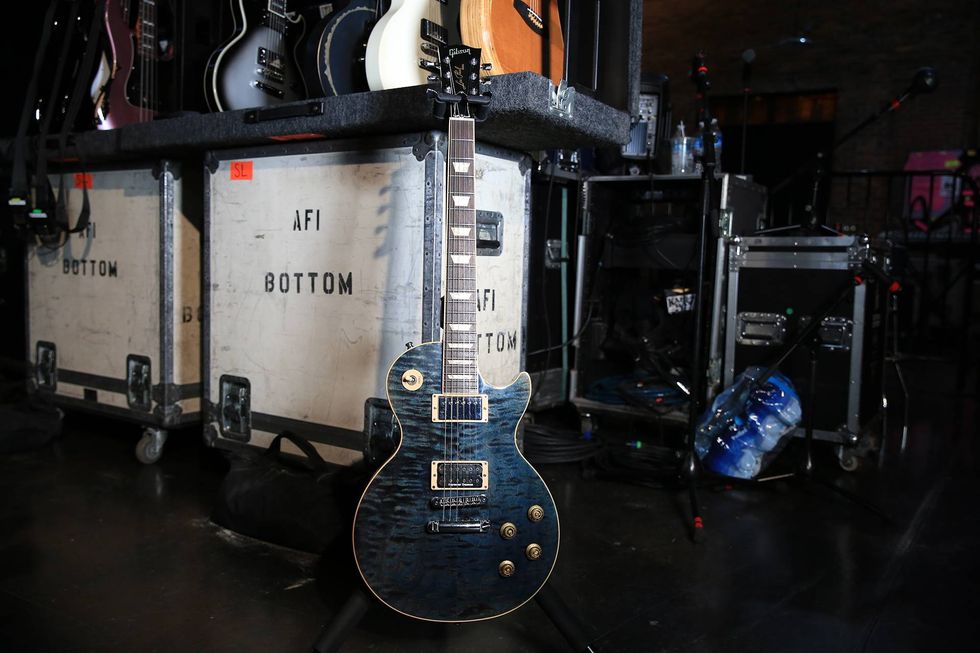
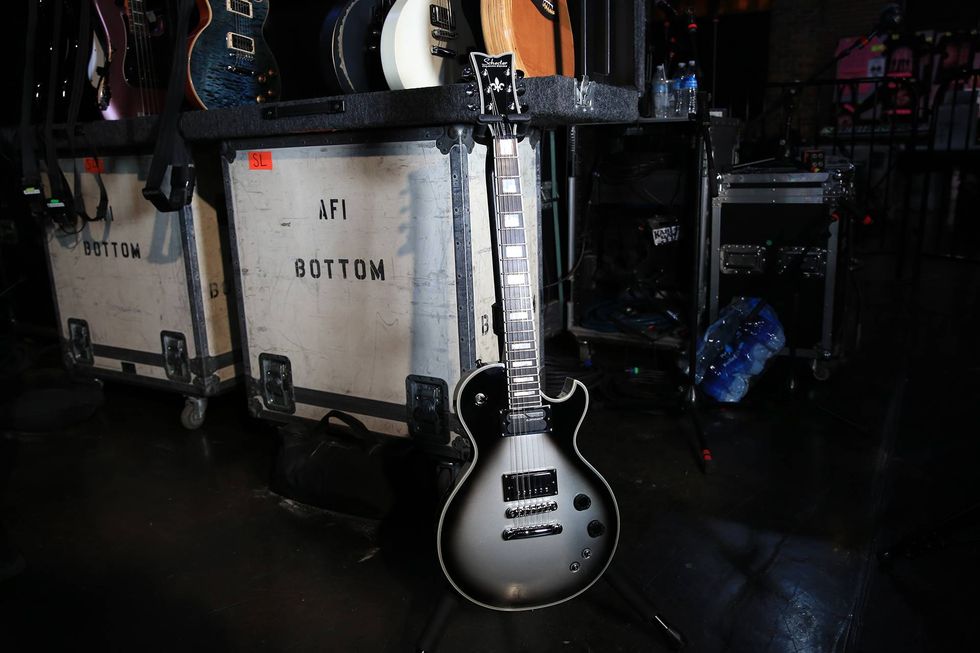
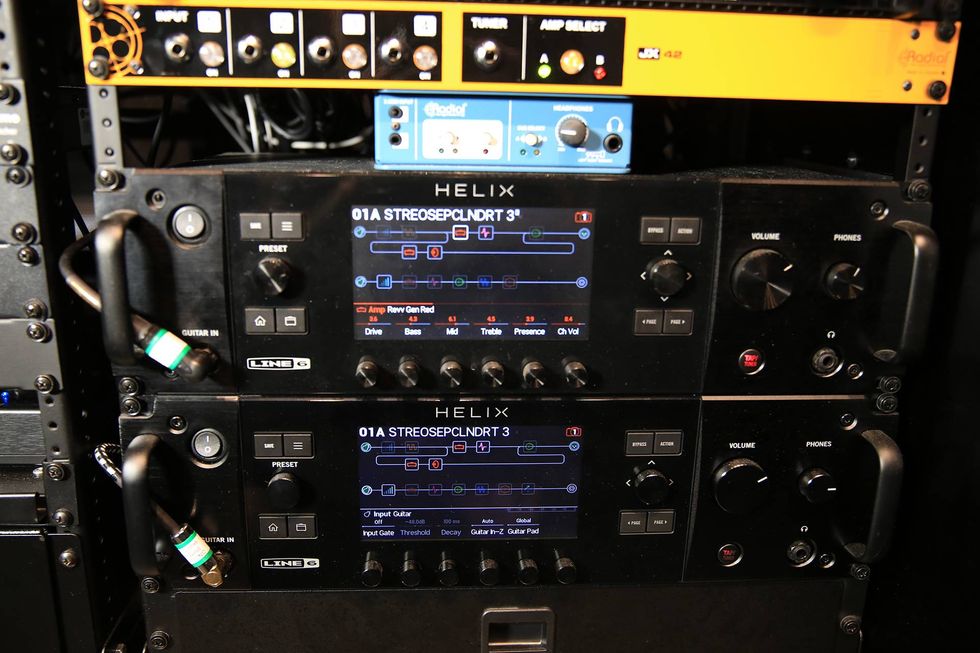
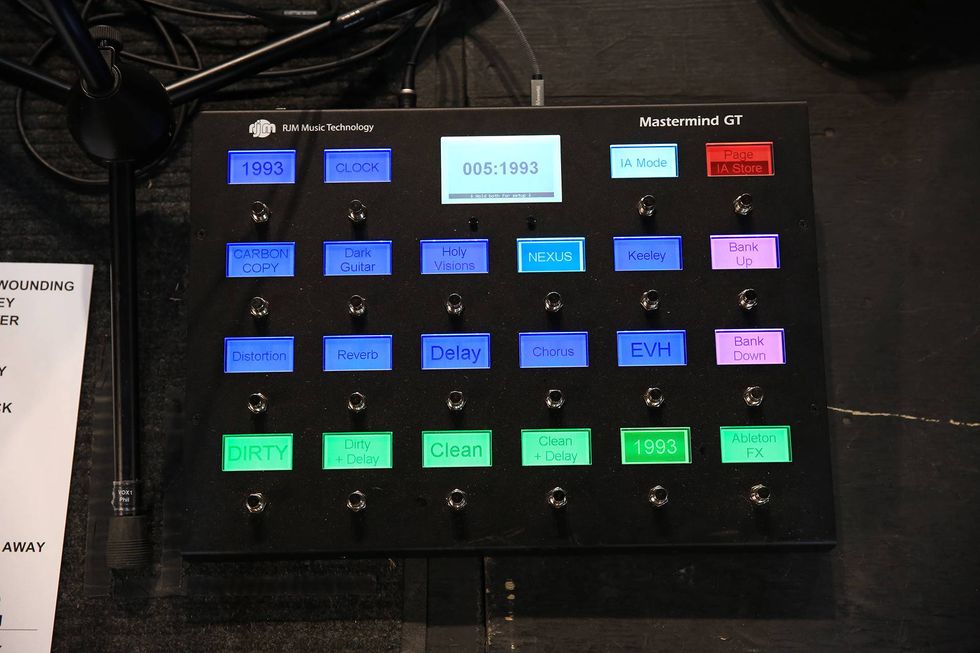
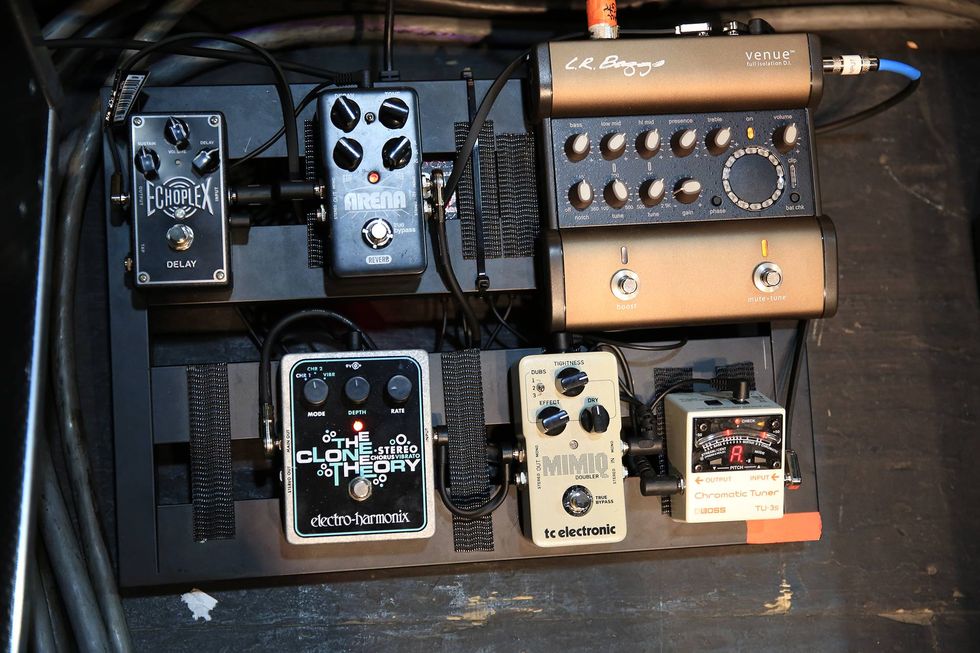
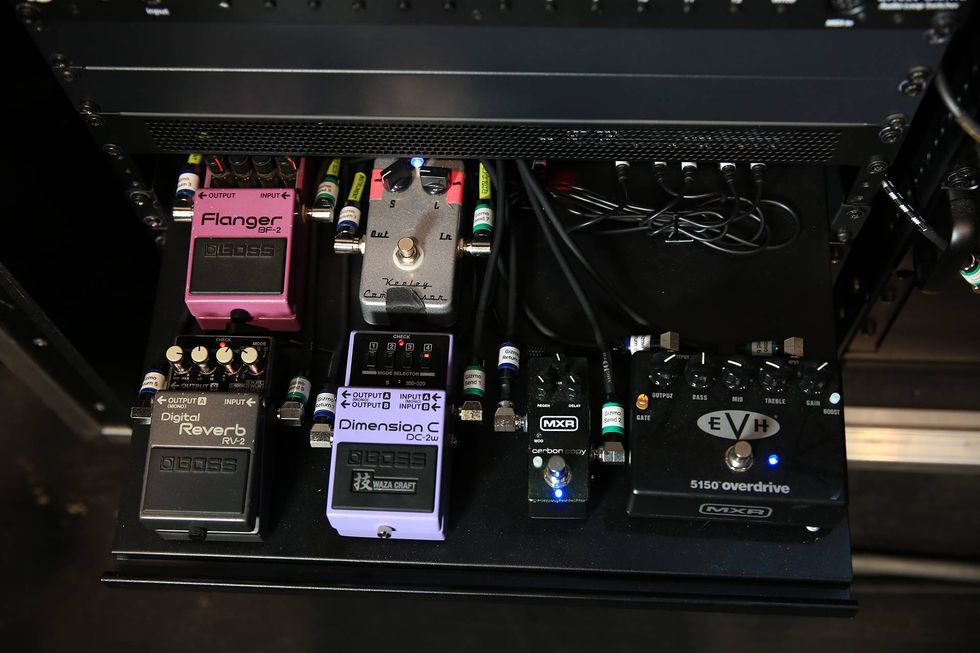
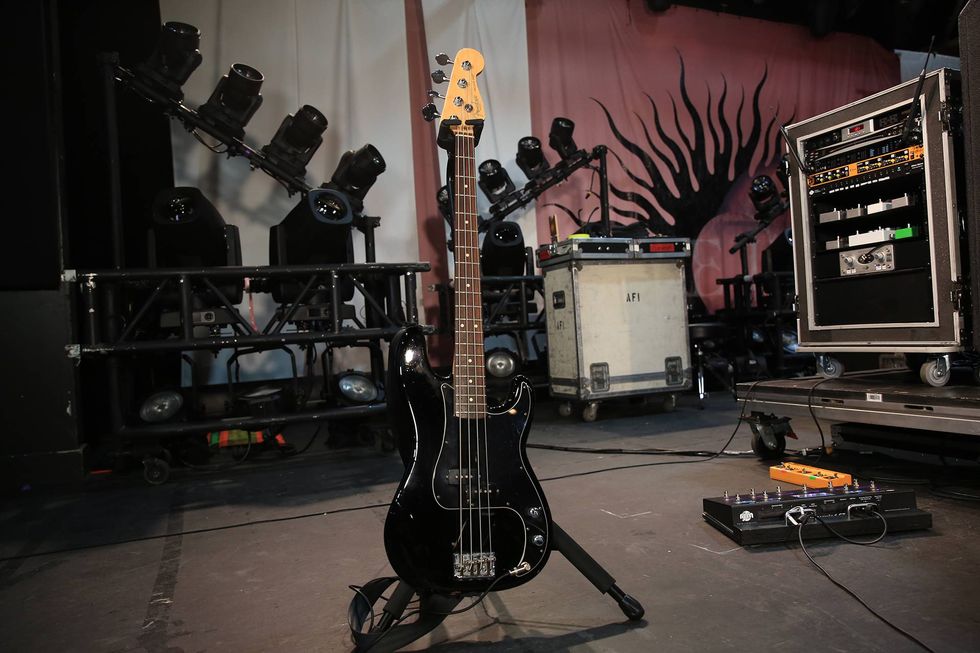
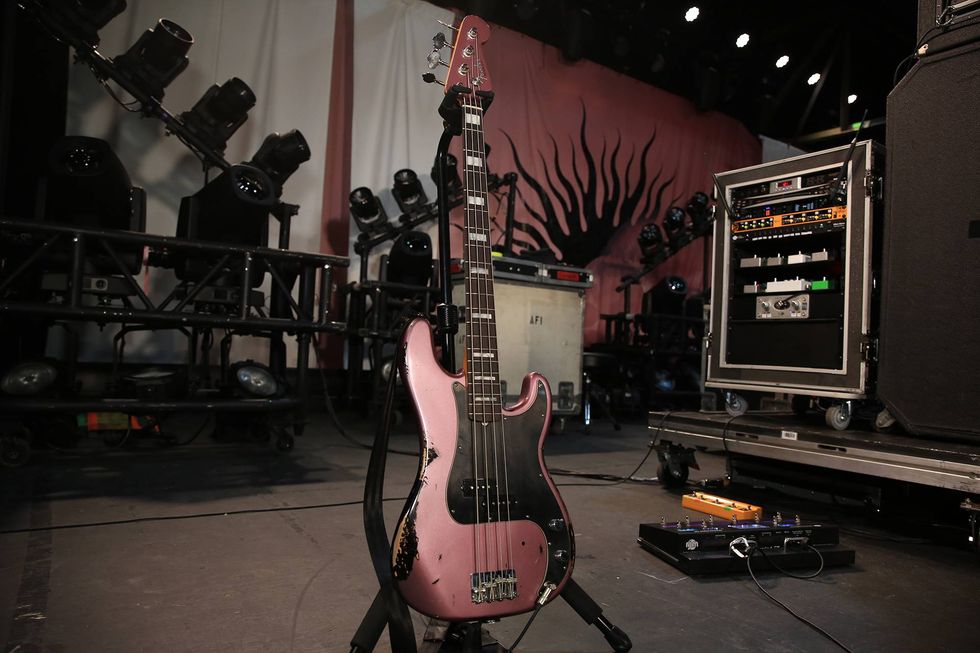
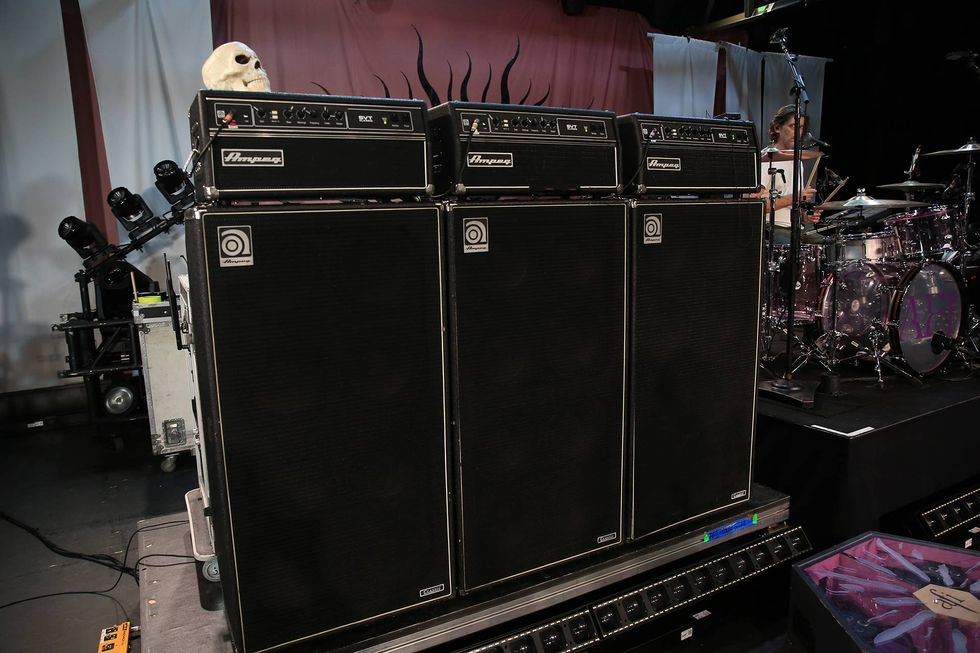
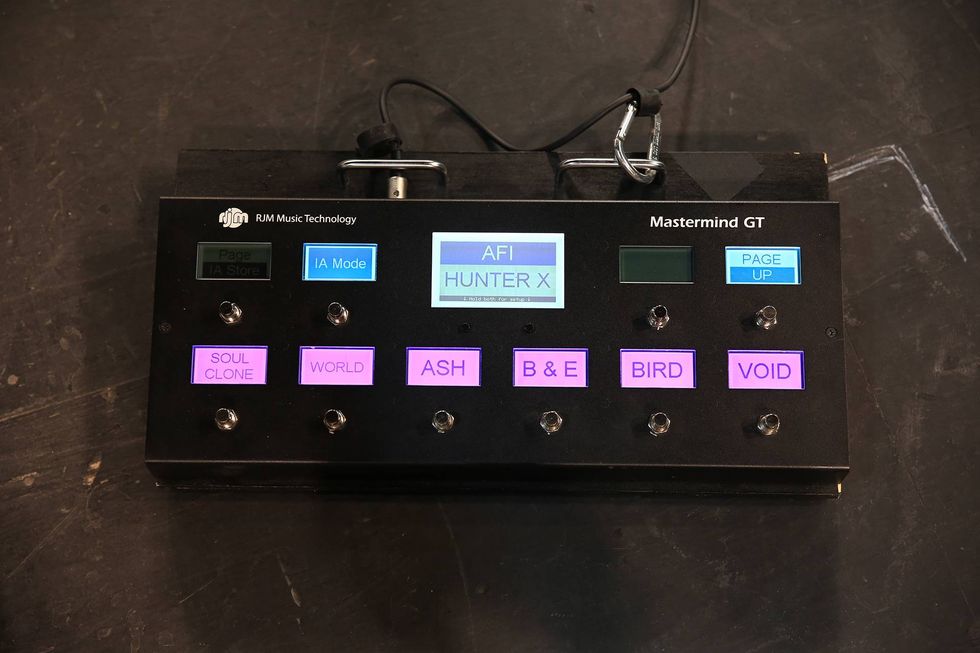
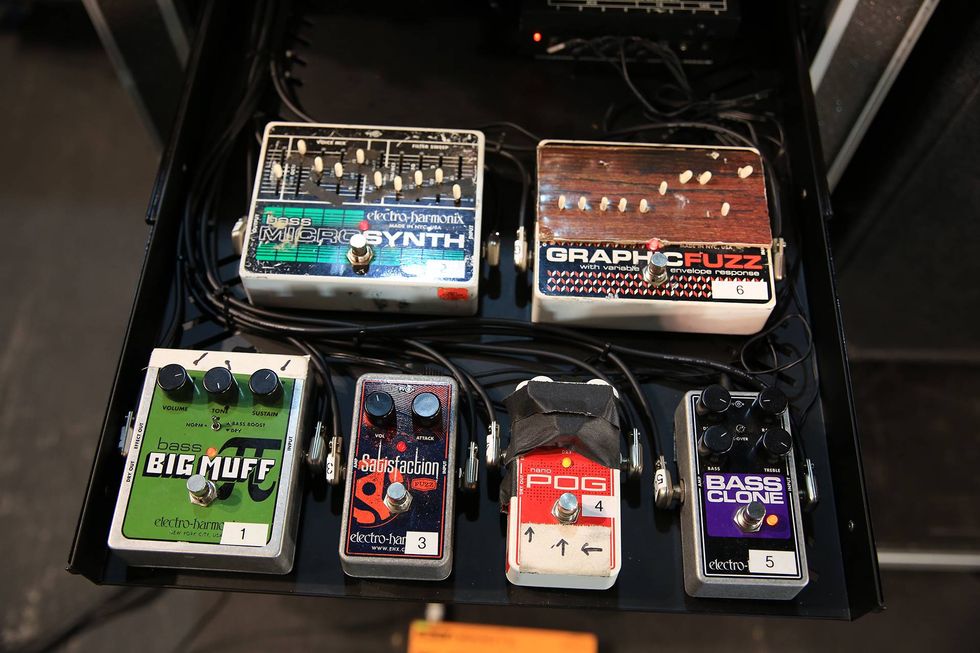
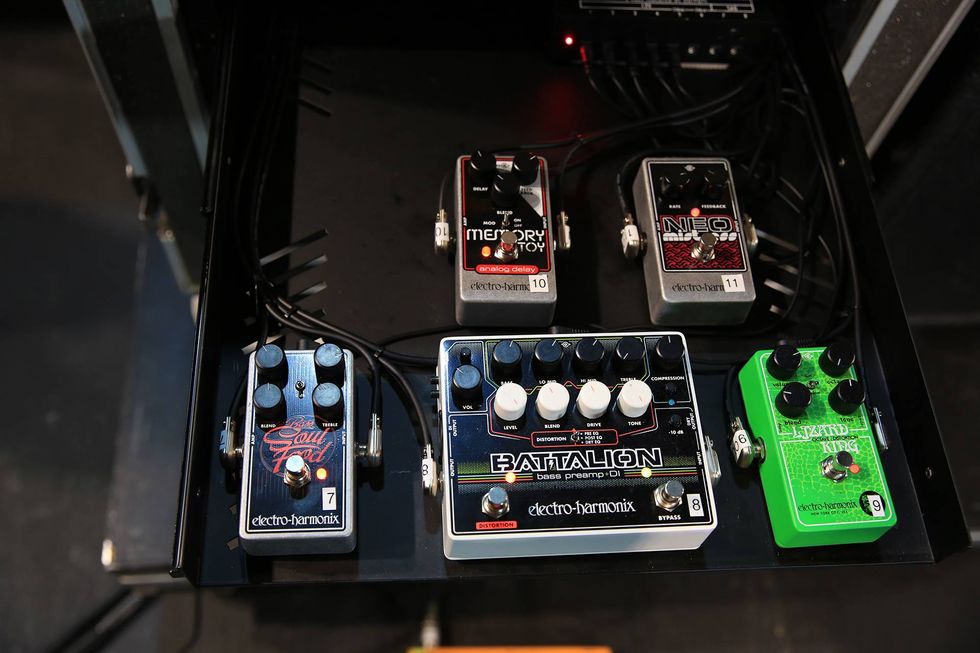
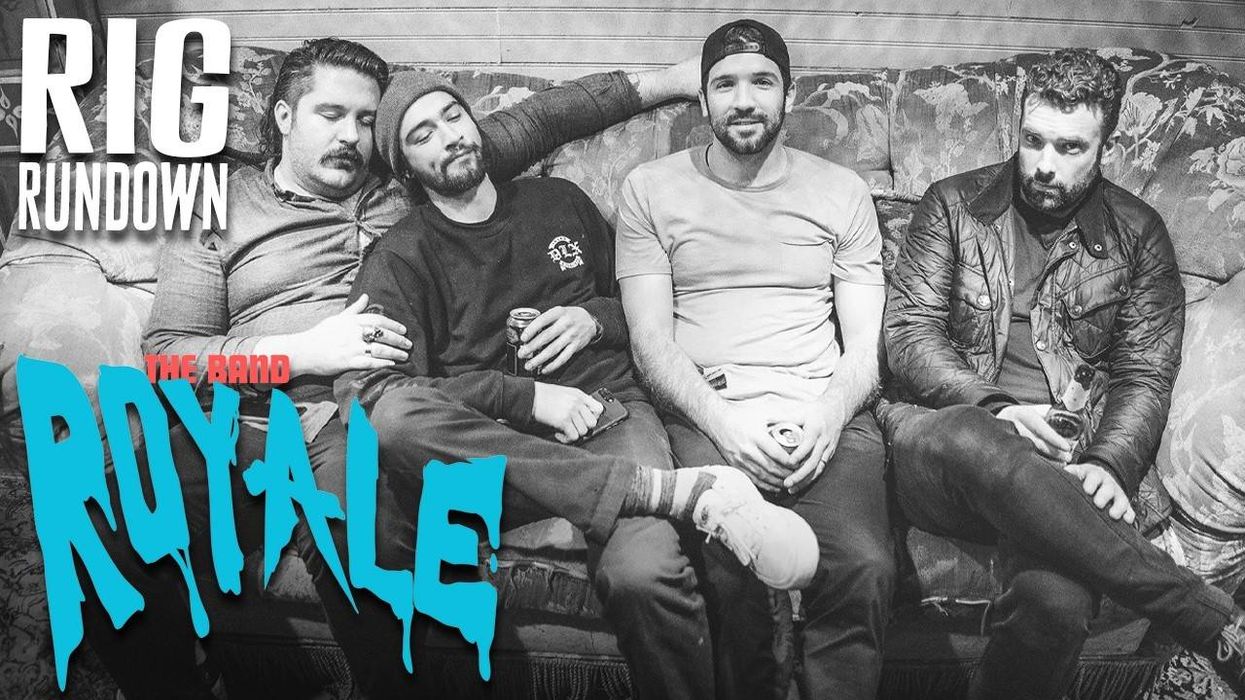
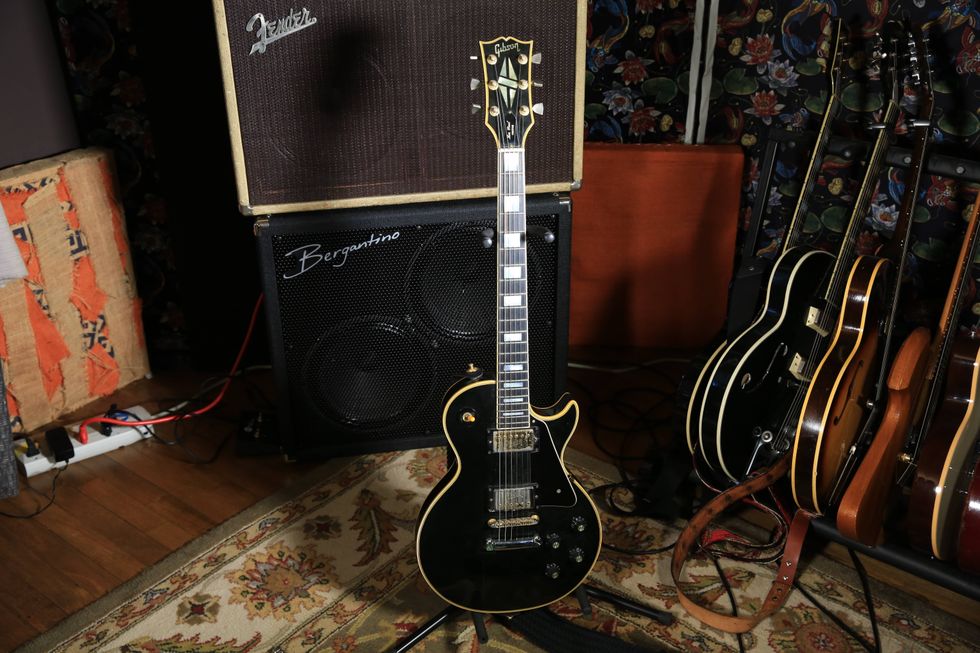
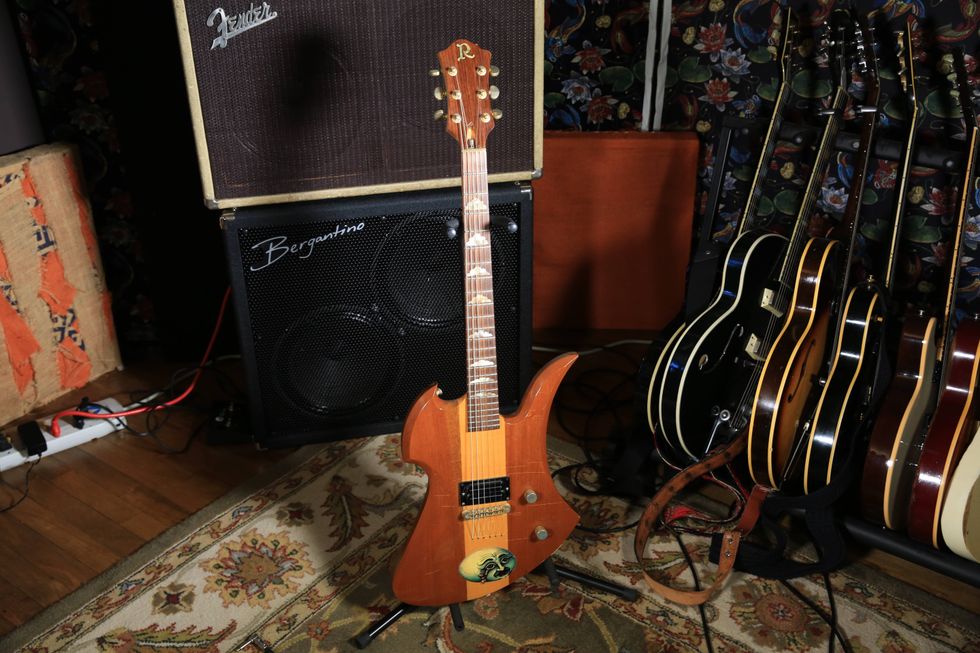
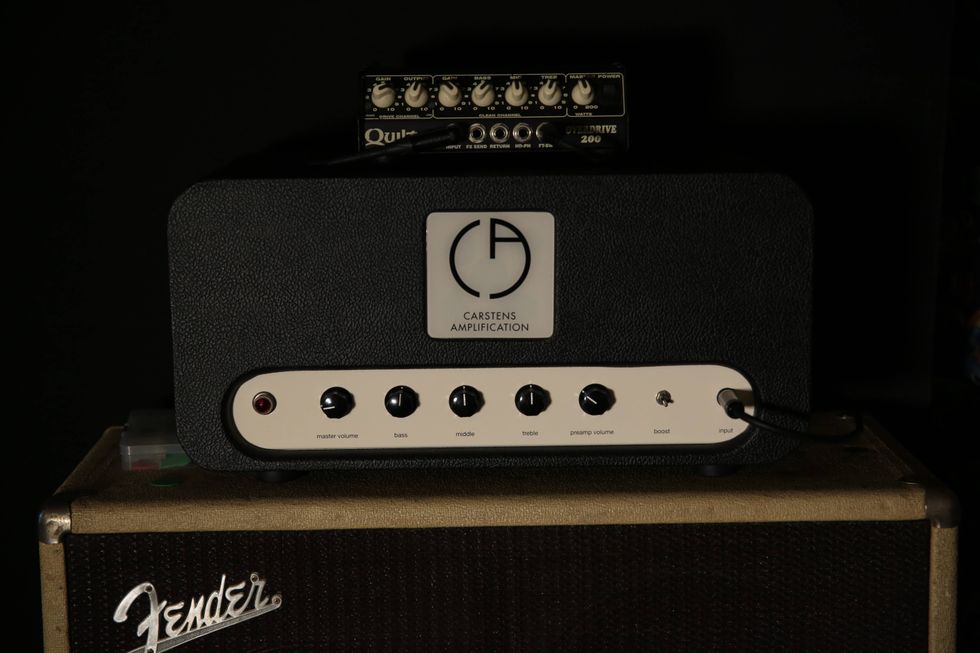
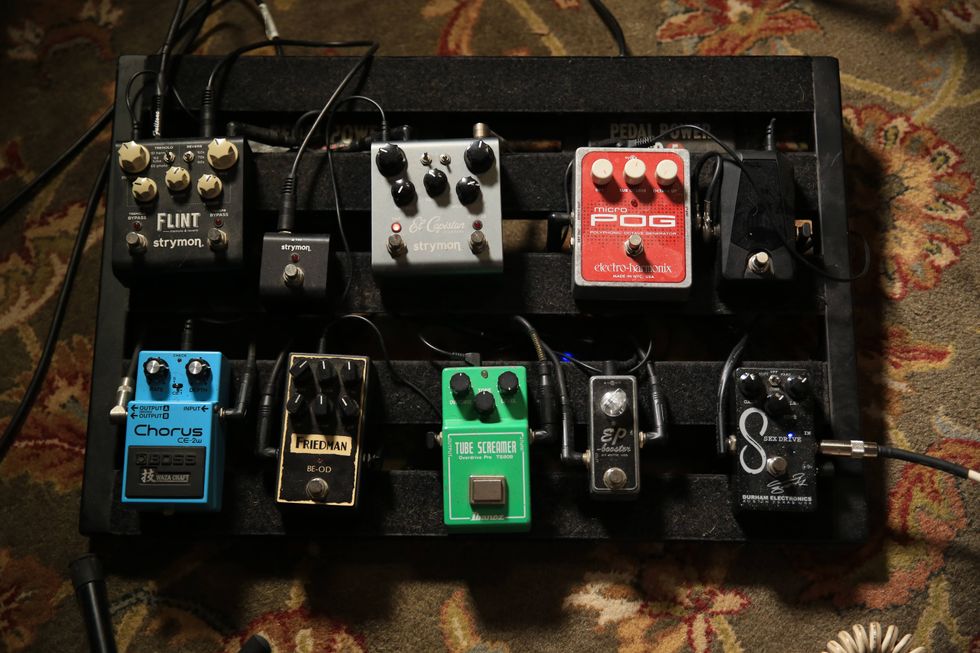
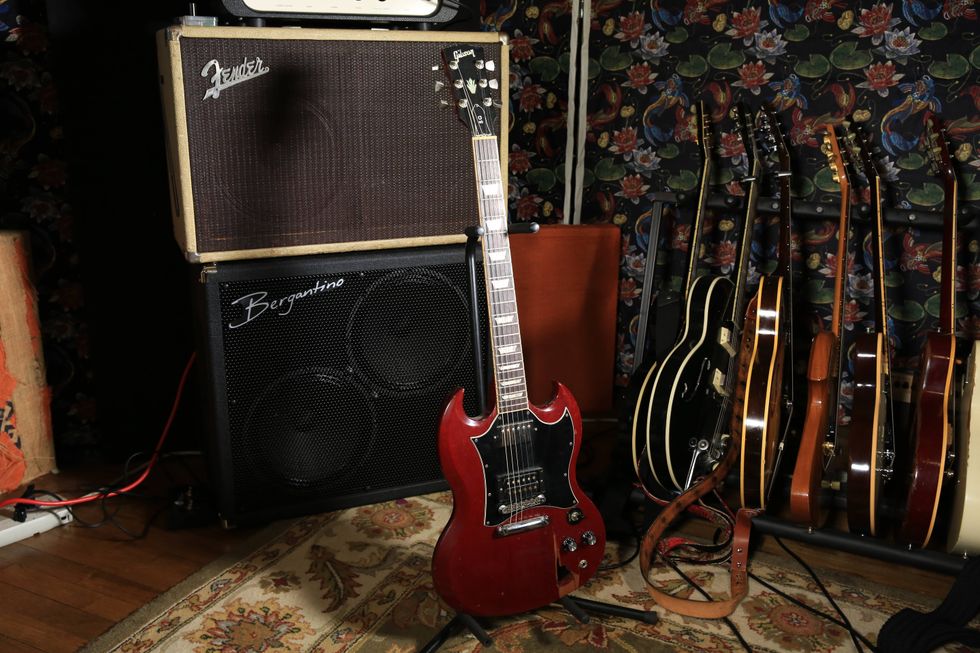
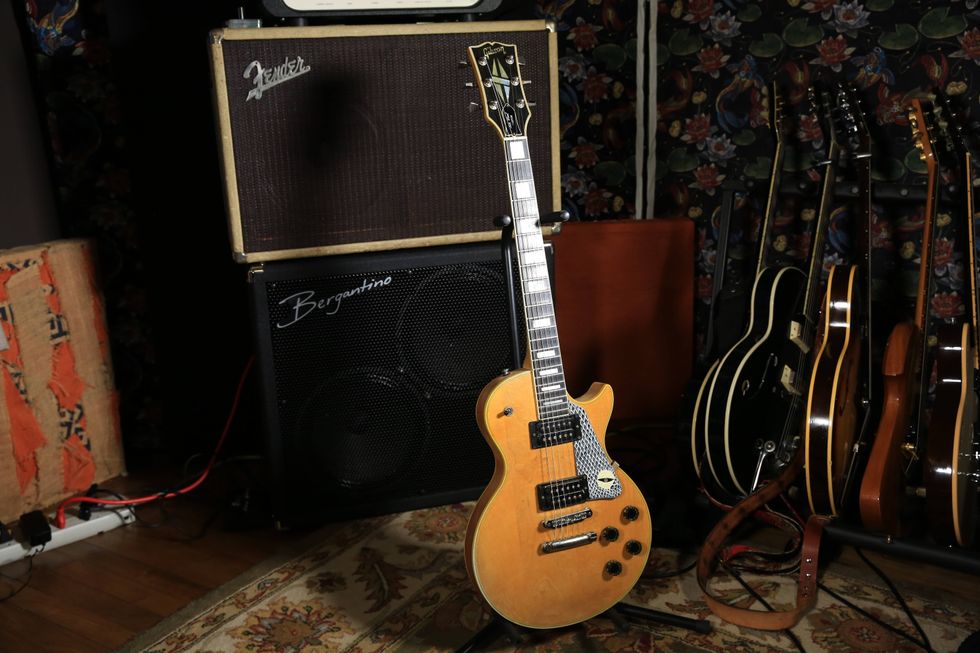
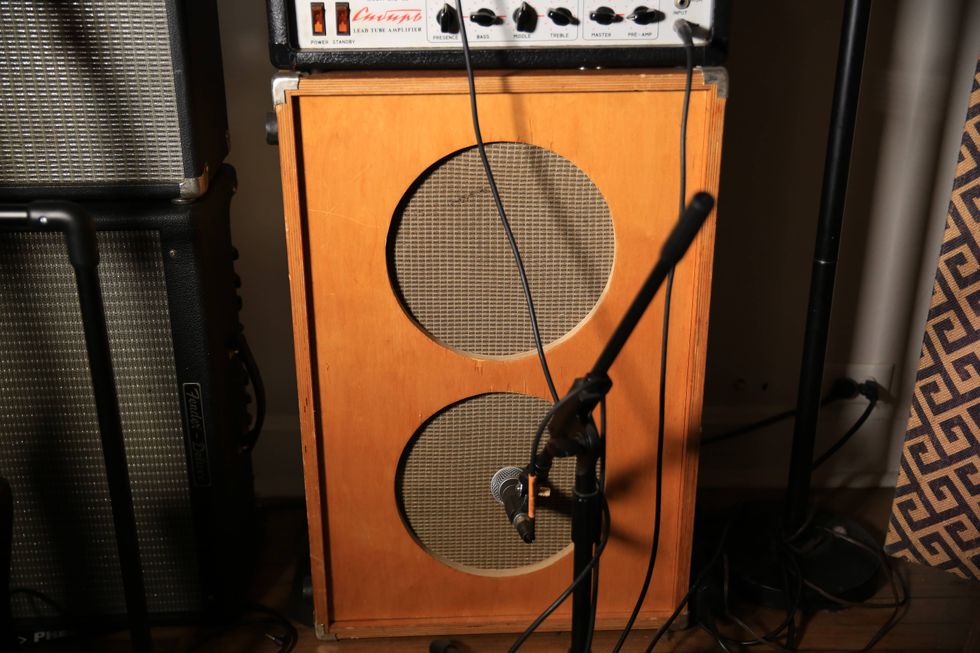
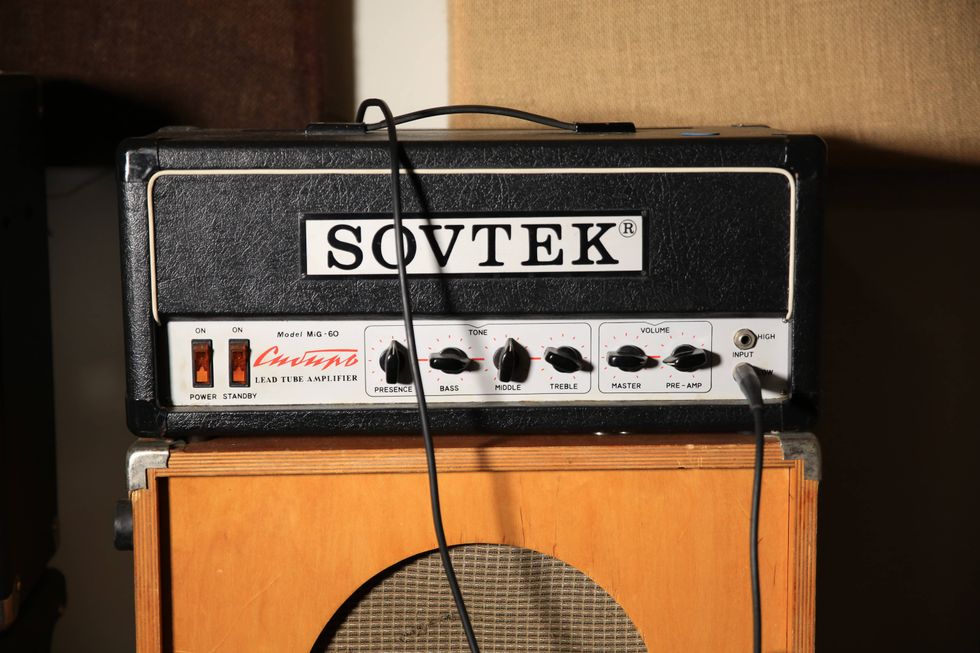 Zach loves his Sovtek Mig 60 head, which he plays through a cab he built himself at a pipe-organ shop in Denver. Every glue joint is lined with thin leather for maximum air tightness, and it’s stocked with Celestion G12M Greenback speakers.
Zach loves his Sovtek Mig 60 head, which he plays through a cab he built himself at a pipe-organ shop in Denver. Every glue joint is lined with thin leather for maximum air tightness, and it’s stocked with Celestion G12M Greenback speakers.